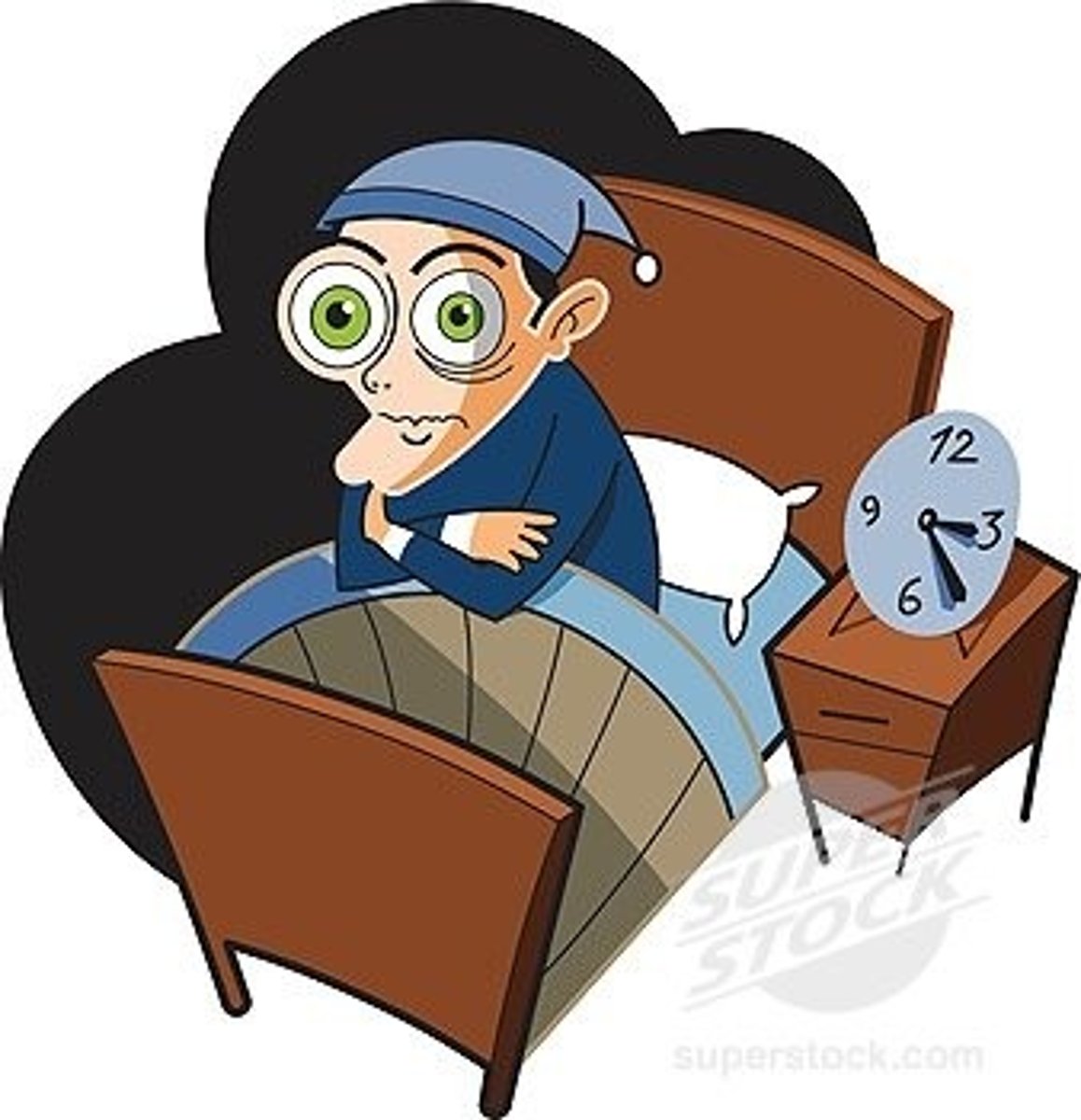chapter 9: sleep and biological rhythms
1/78
There's no tags or description
Looks like no tags are added yet.
Name | Mastery | Learn | Test | Matching | Spaced |
|---|
No study sessions yet.
79 Terms
circannual vs. circadian cycles
circannual: yearly cycles (e.g., migration, hibernation). circadian: daily cycles (~24 hours, e.g., sleep-wake cycle). endogenous factors (like the scn) maintain internal rhythms. exogenous factors (light, temperature) help synchronize them to the environment.
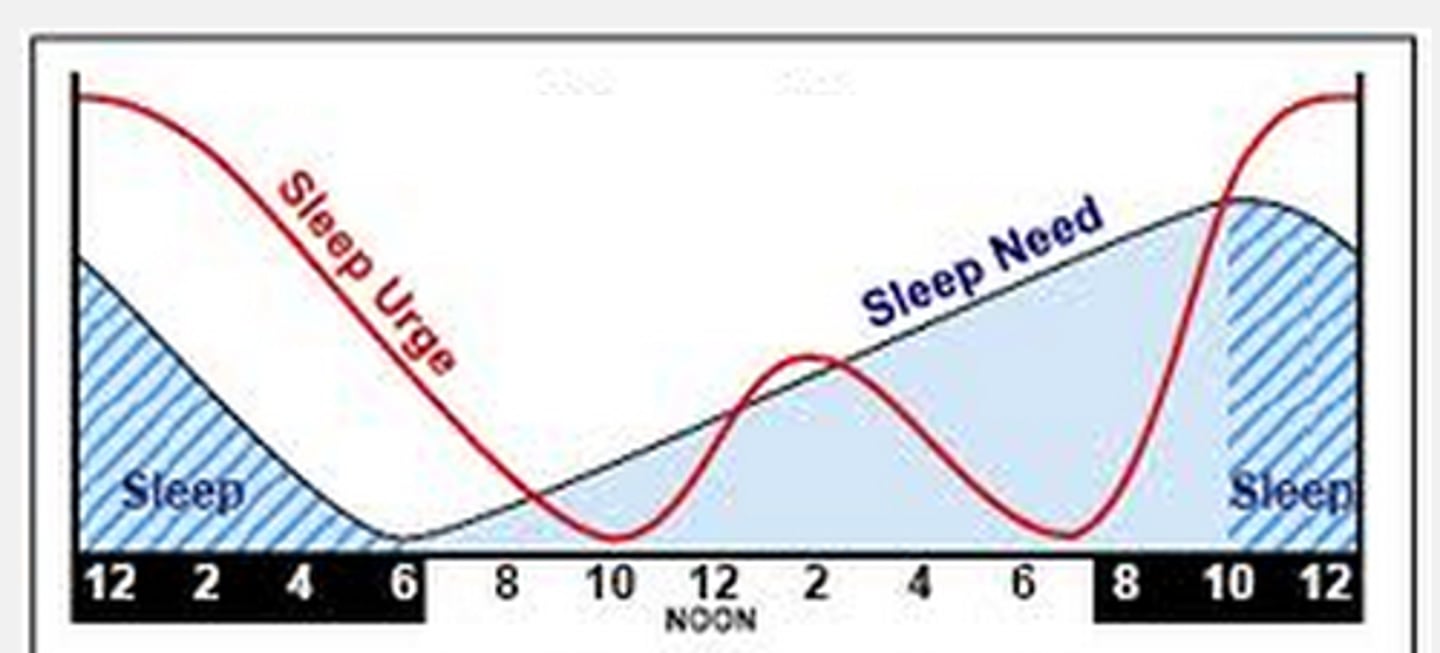
free-running rhythm
a rhythm that persists without external cues (e.g., light/dark). it varies slightly among animals, not always 24 hours.
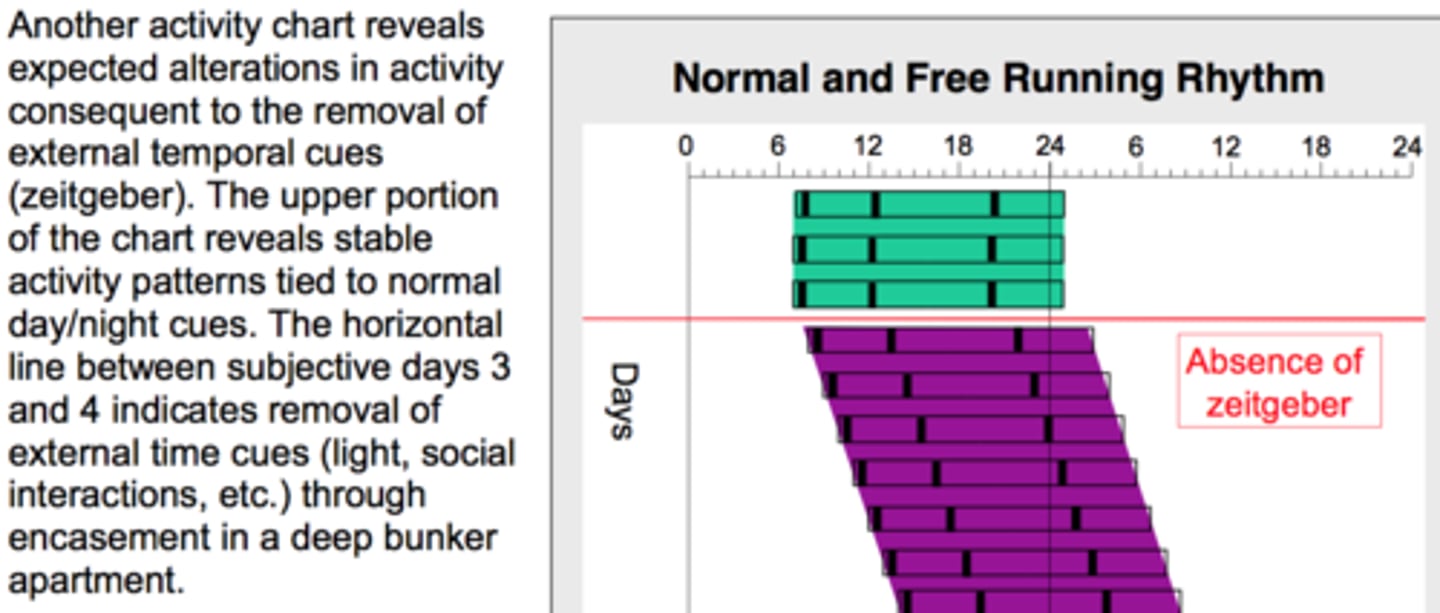
daily rhythm resetting
light exposure, melatonin, social cues, and physical activity can reset circadian rhythms.
zeitgeber
a time cue (e.g., sunlight) that helps regulate biological rhythms.
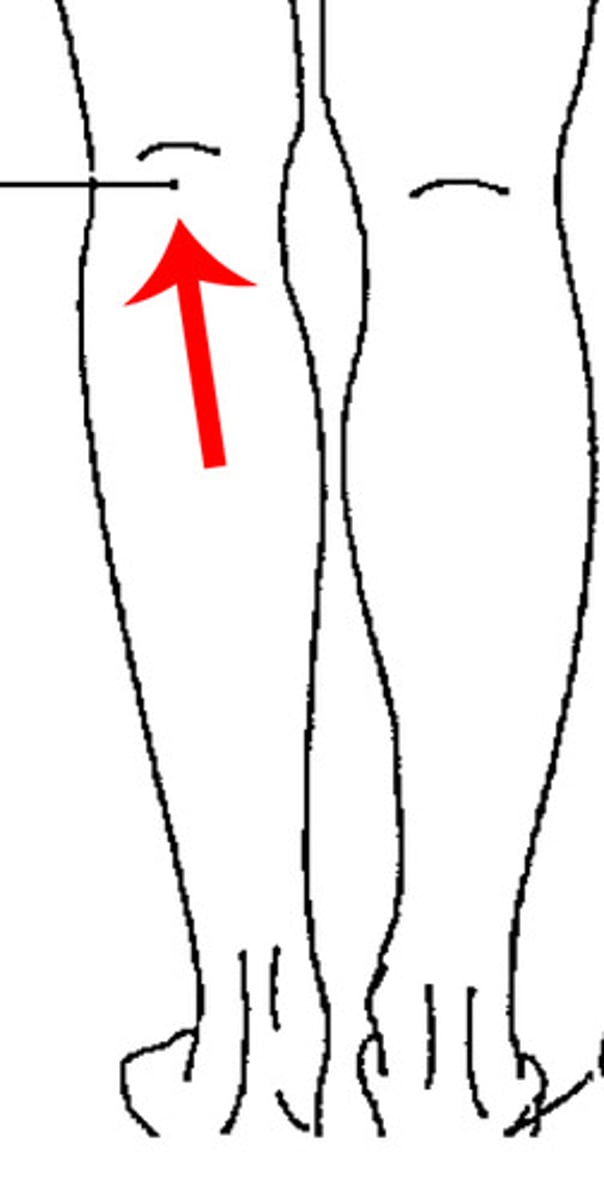
eeg (electroencephalogram)
measures brain's electrical activity; reveals different brain states like sleep stages.
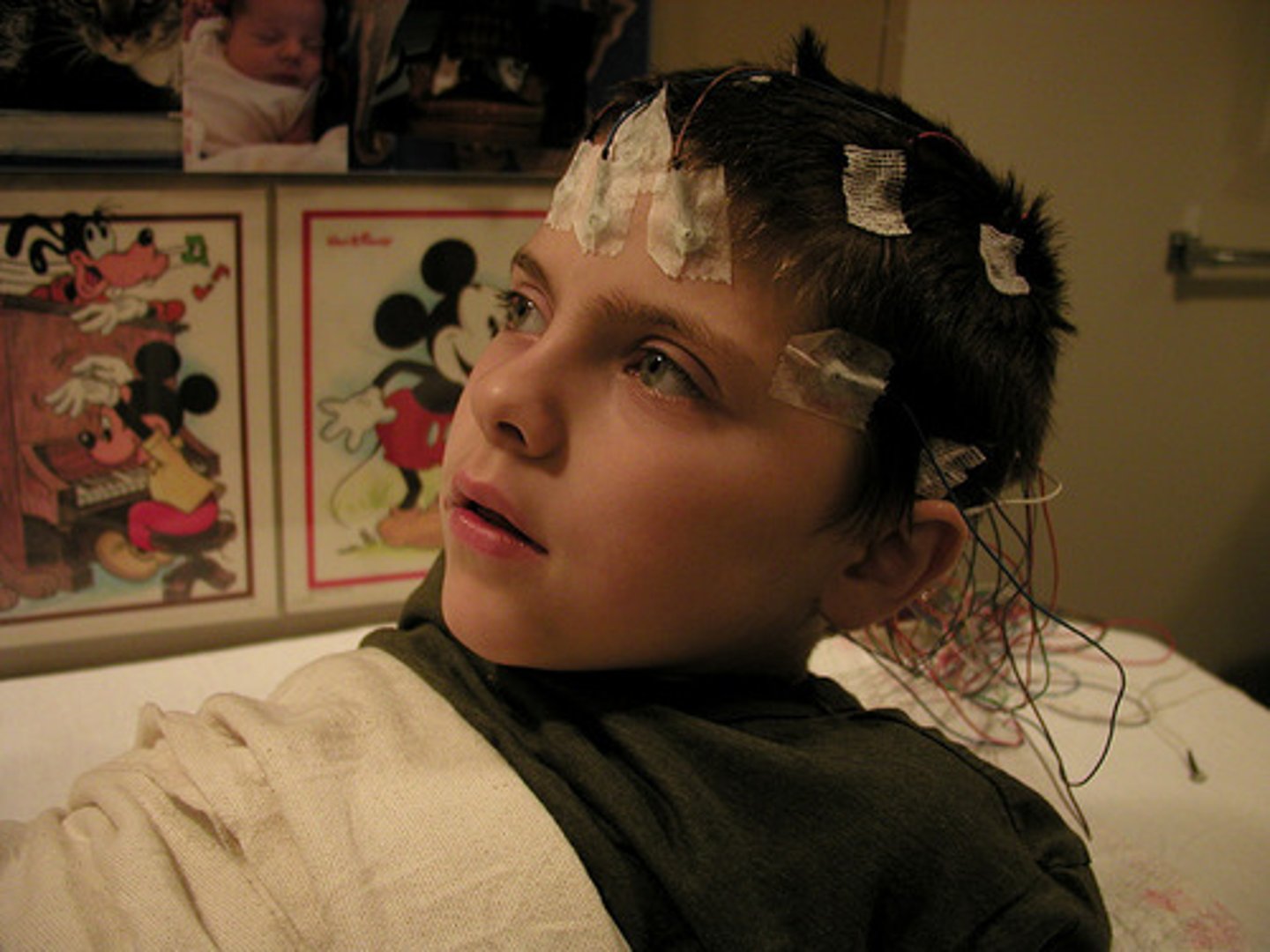
emg (electromyogram)
measures muscle activity; low during rem sleep use to atonia.
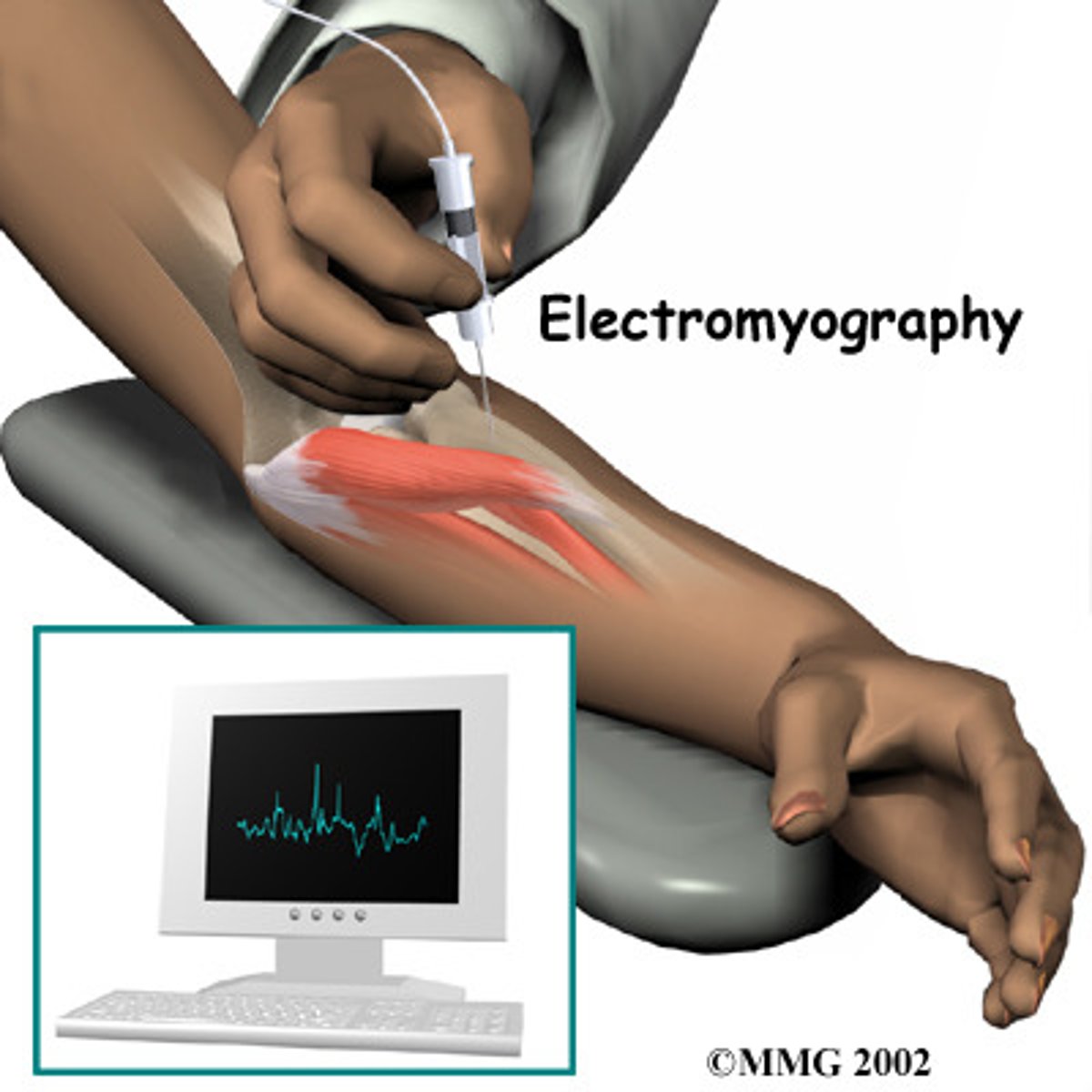
eog (electroculogram)
measures eye movements; detects rem sleep through rapid movements.
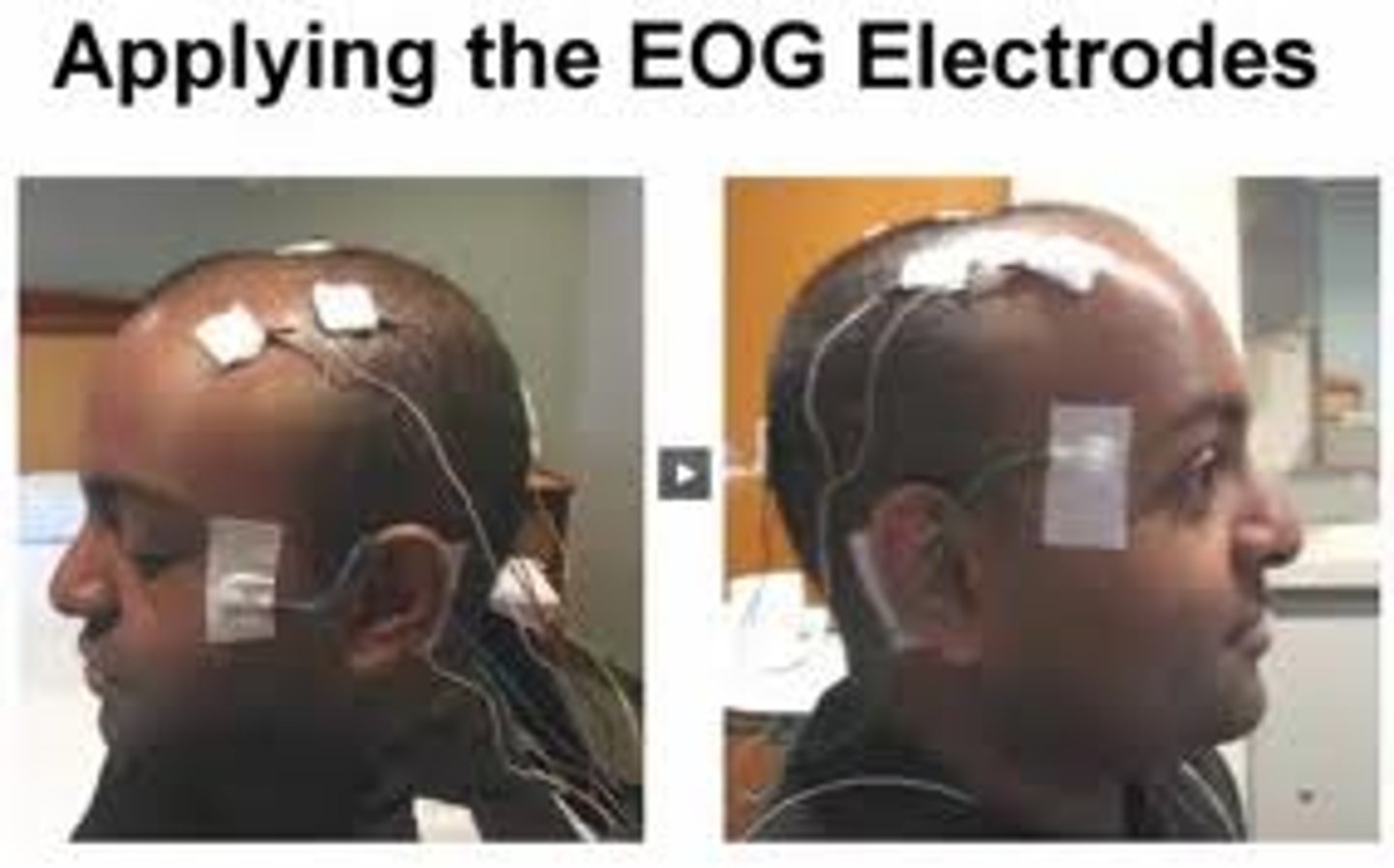
alpha, beta, theta, delta waves
alpha: relaxed wakefulness. beta: alert, awake state. theta: light sleep (stage 1/2). delta: deep sleep (stages 3/4).
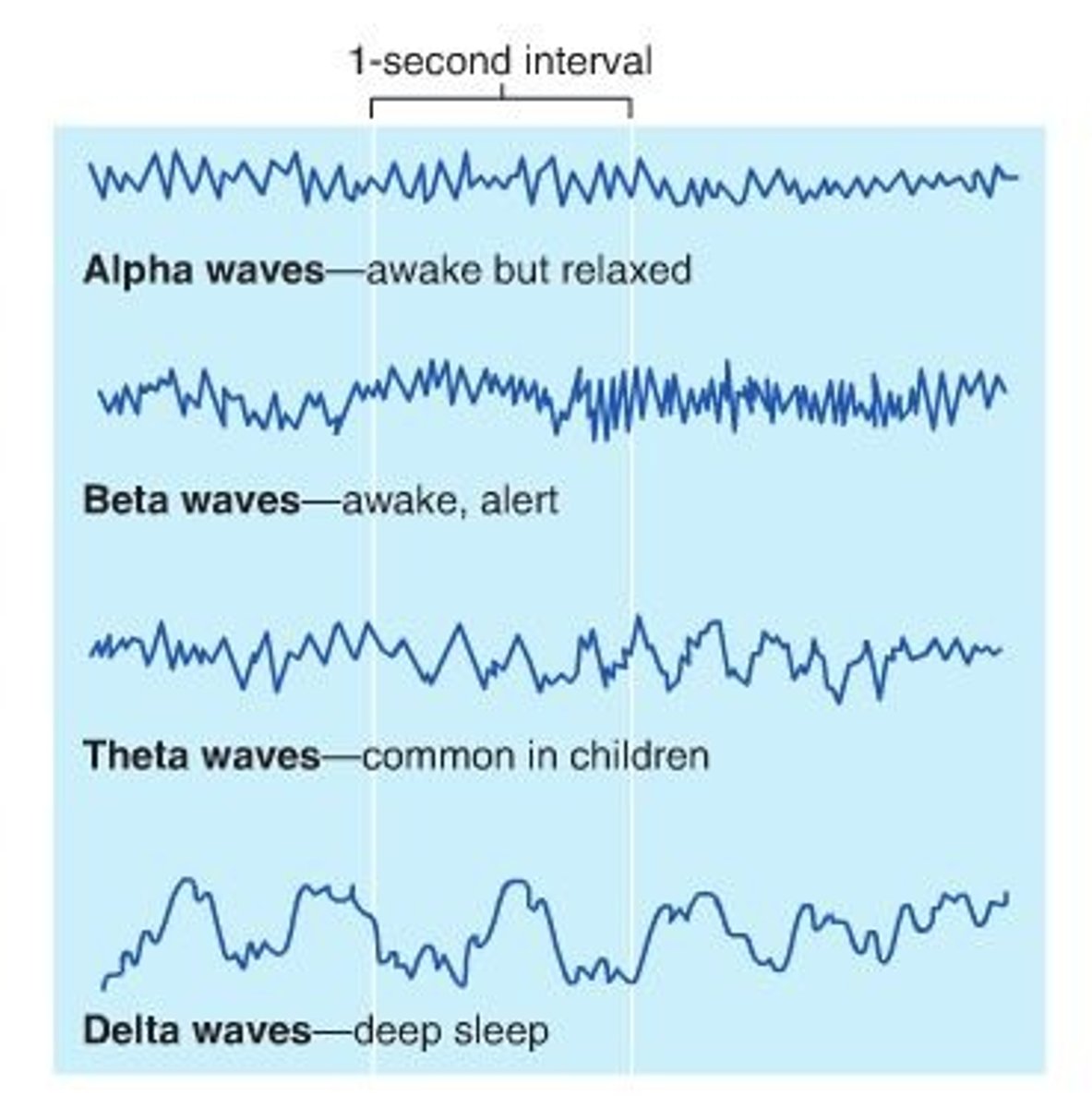
synchronous neuronal activity
characteristic of sleep, especially slow-wave sleep.
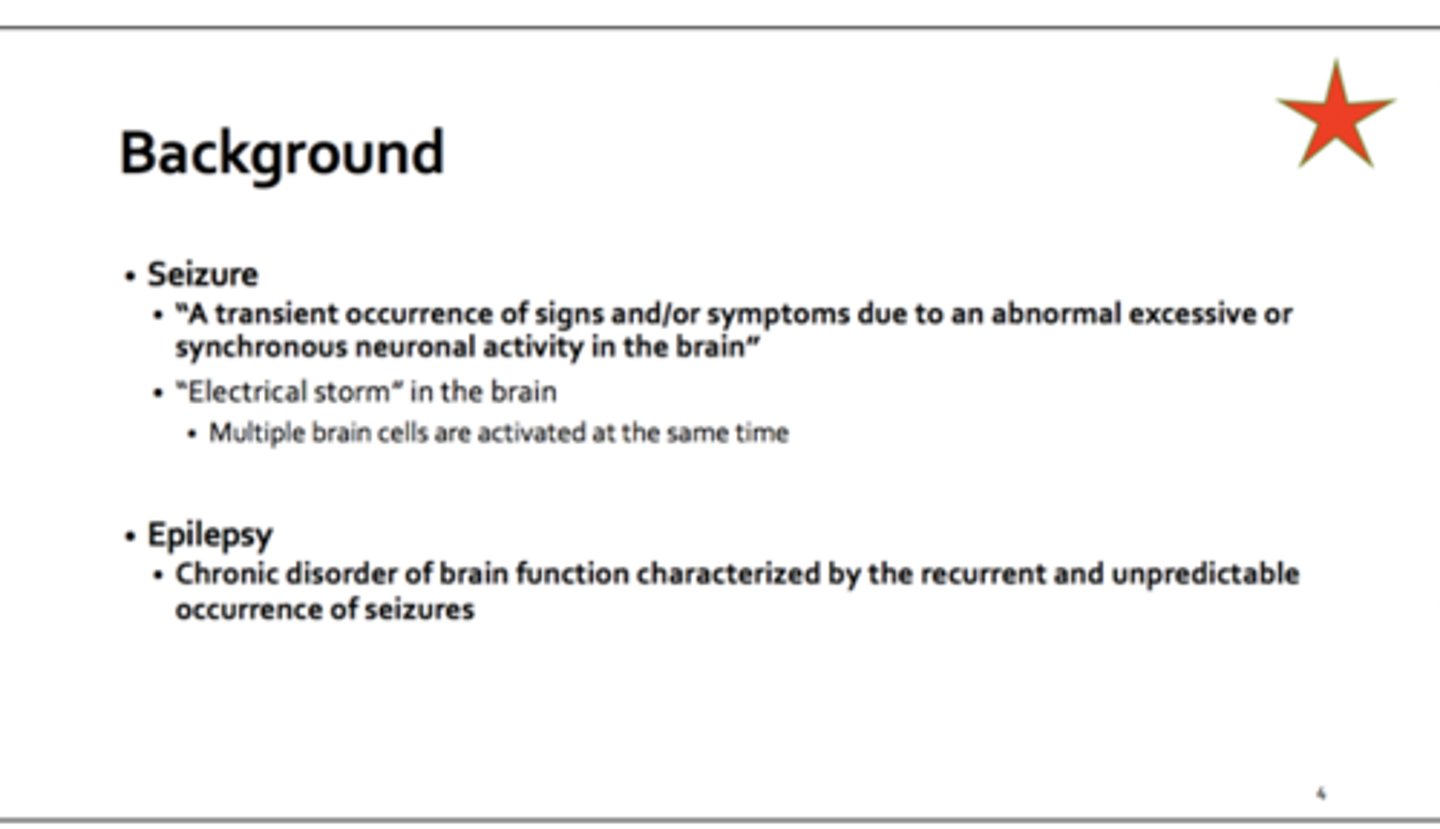
brain waves during wakefulness
mostly beta (alert) and some alpha (relaxed).

4 sleep stages + rem
stage 1: light sleep, theta waves. stage 2: sleep spindles, k-complexes. stages 3 & 4: delta waves, deep slow-wave sleep. rem: rapid eye movement, vivid dreams, muscle atonia.
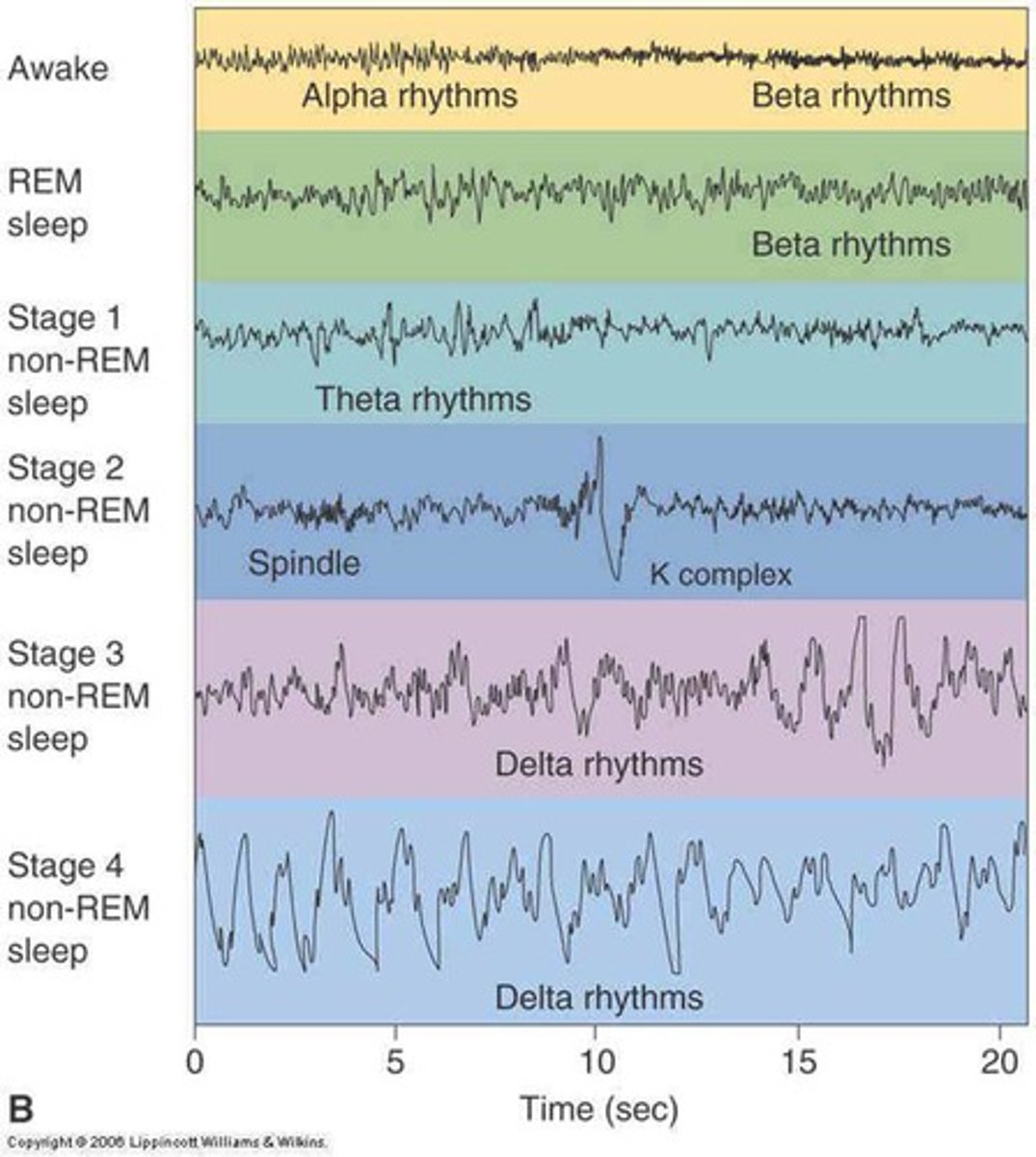
slow-wave sleep (sws)
deep sleep; stages 3 & 4 marked by delta waves.
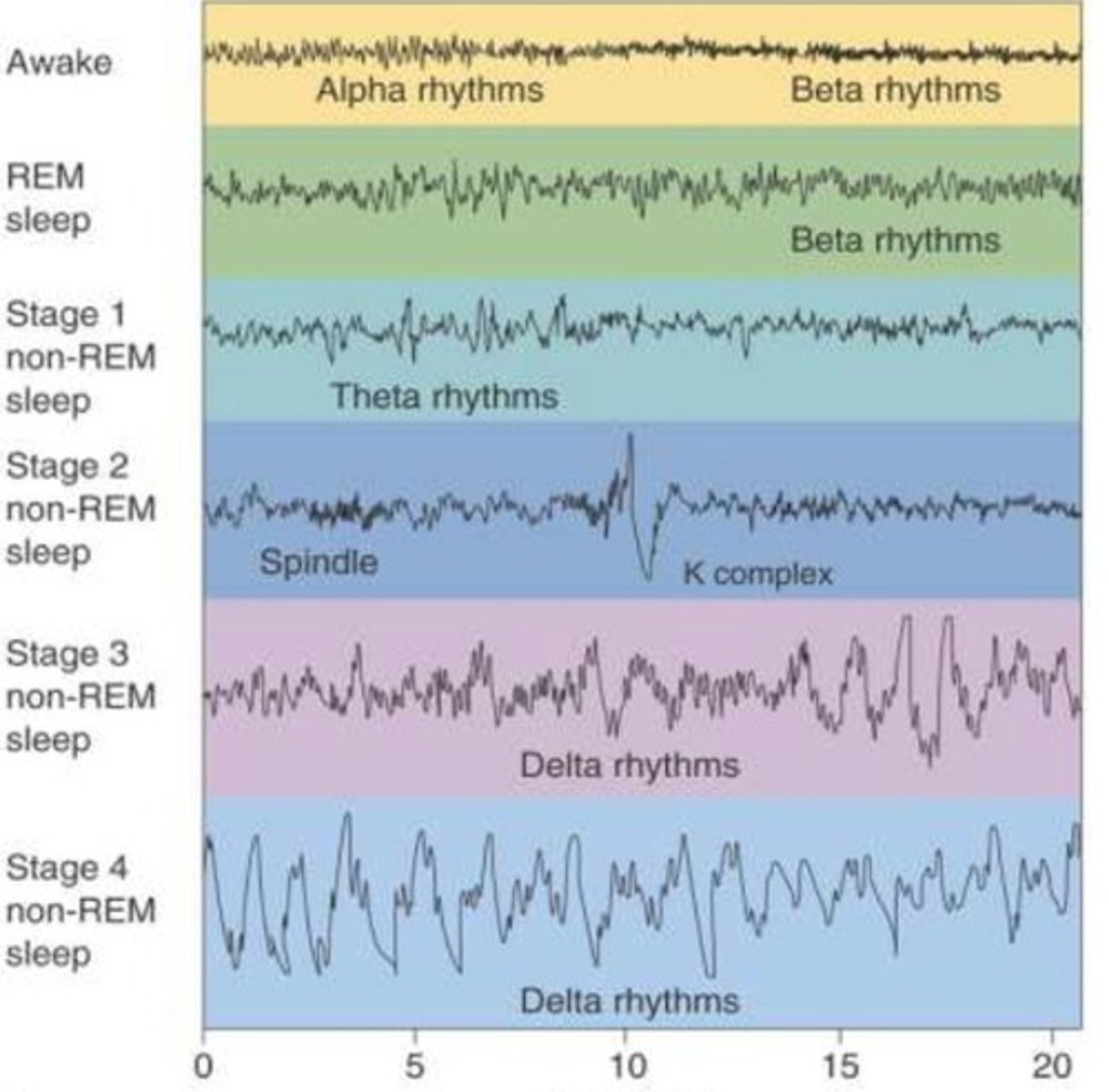
sleep spindles
bursts of 12-15 hz activity; occur in stage 2.
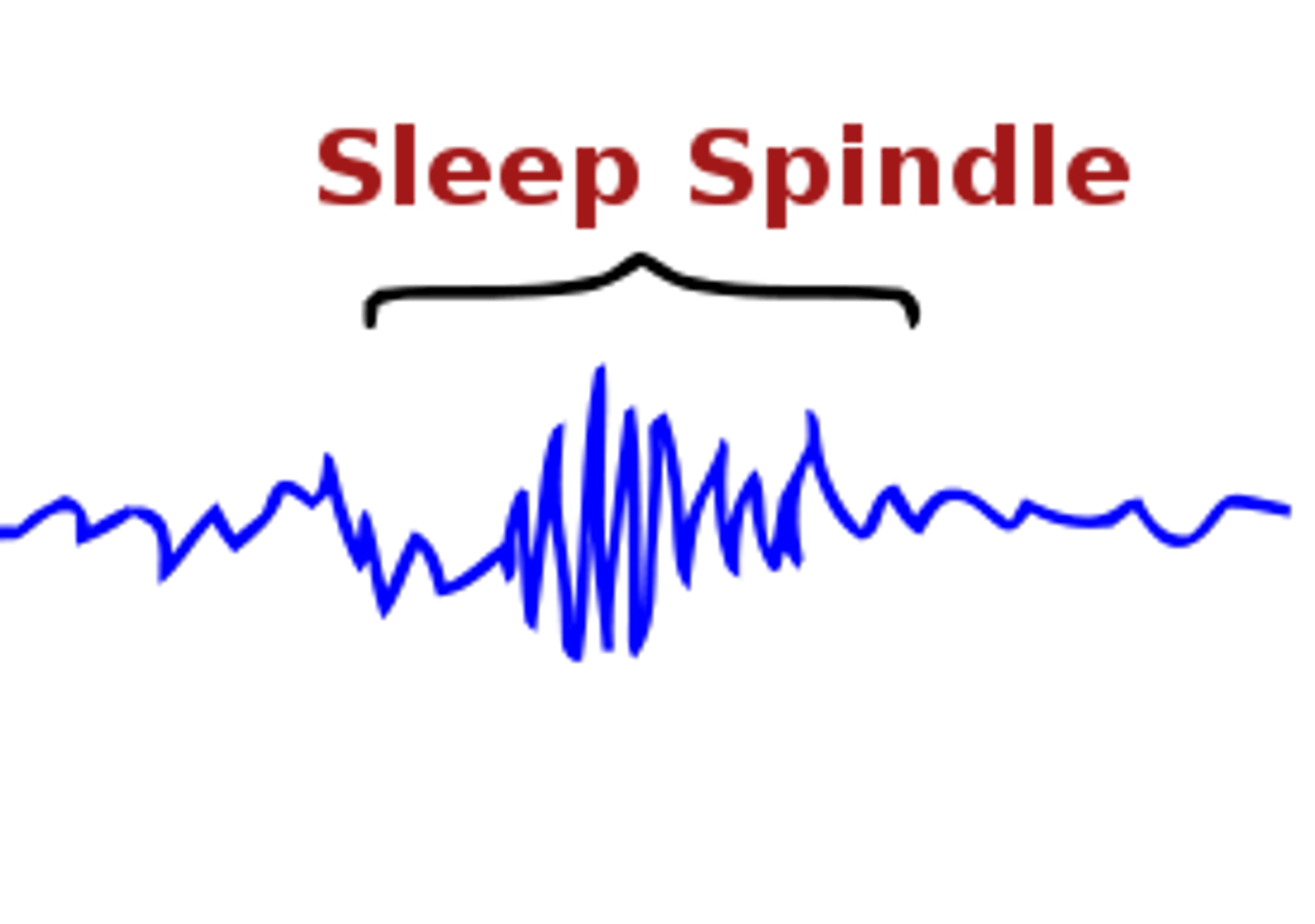
k complex waves
high-amplitude waves in stage 2; response to stimuli, promote memory consolidation.
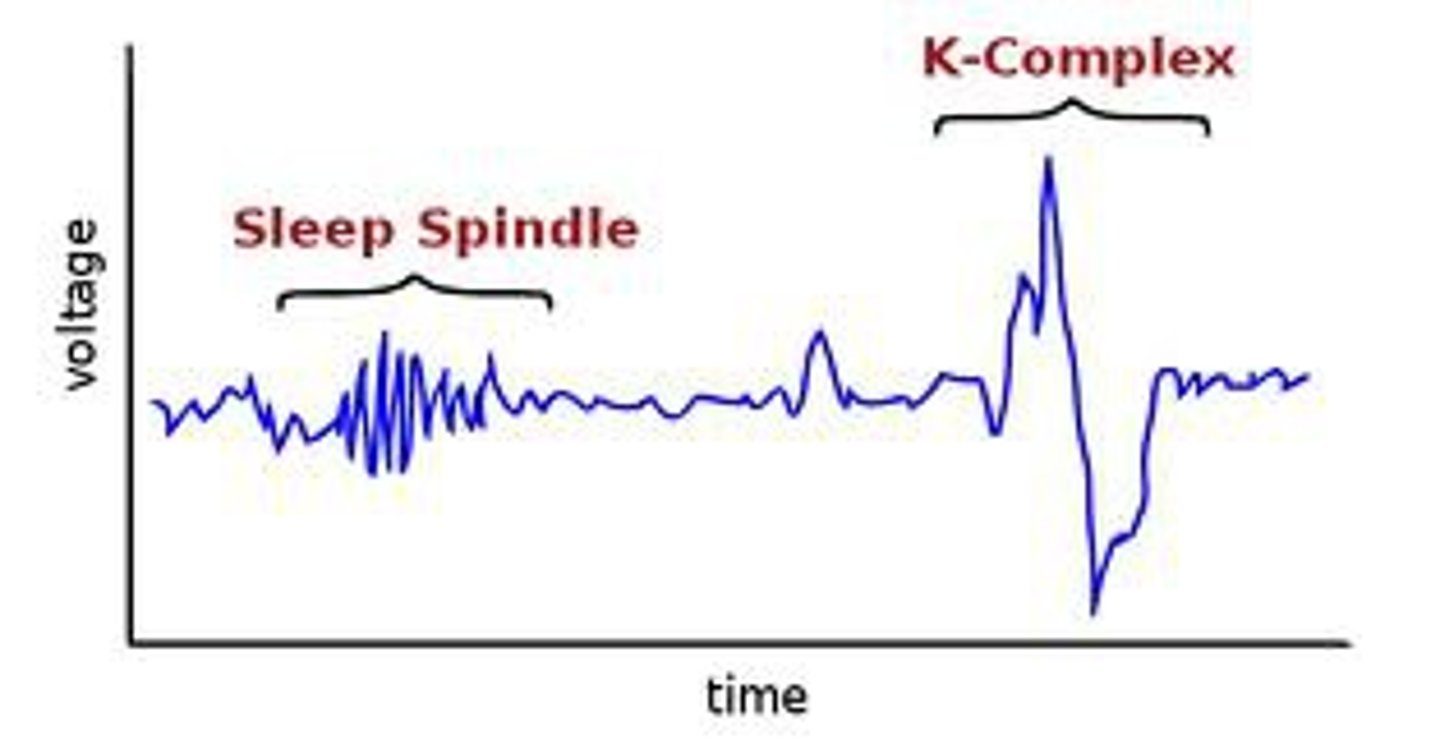
rem = paradoxical sleep
brain is active like wakefulness, but body is paralyzed.
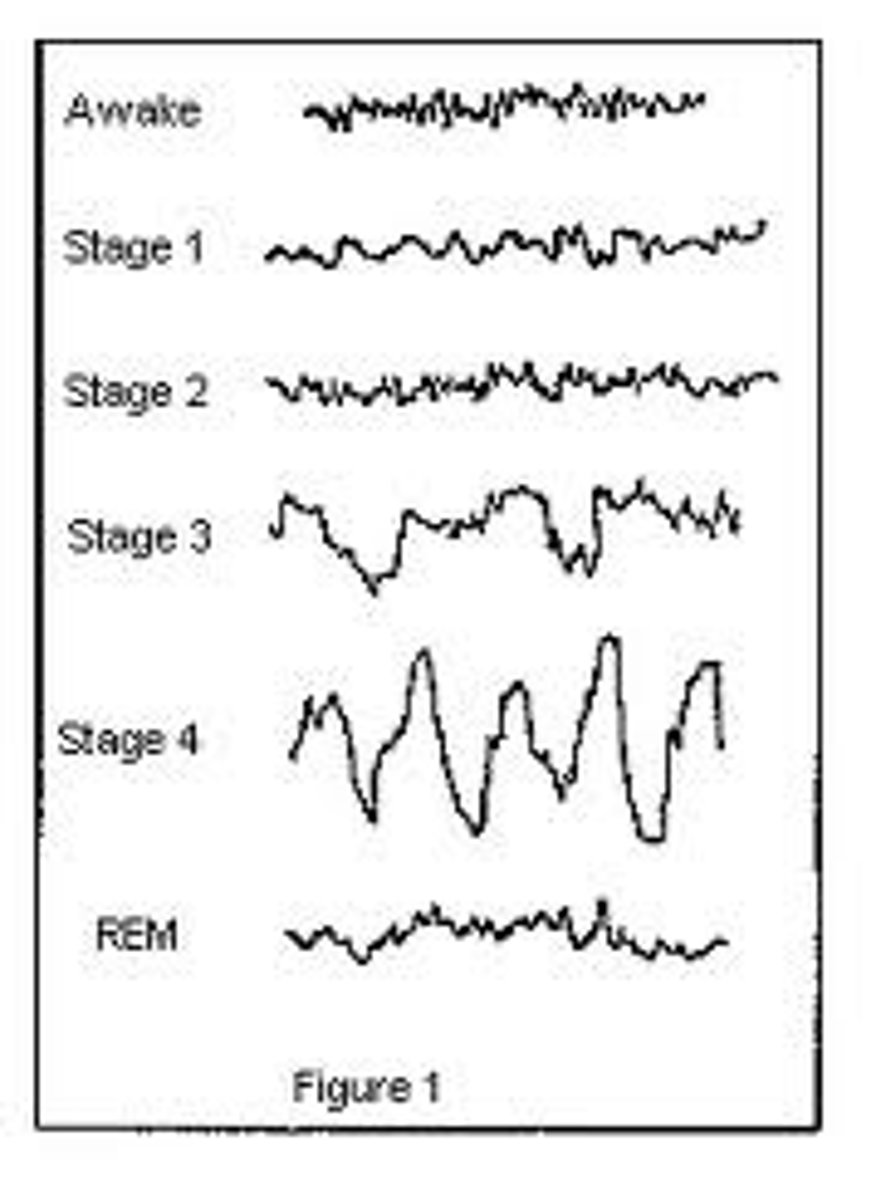
nightly sleep progression
cycle through stages 1->2->3->4->rem; repeat ~90 mins. rem gets longer later in night.
most rem sleep
occurs in the latter half of the night.
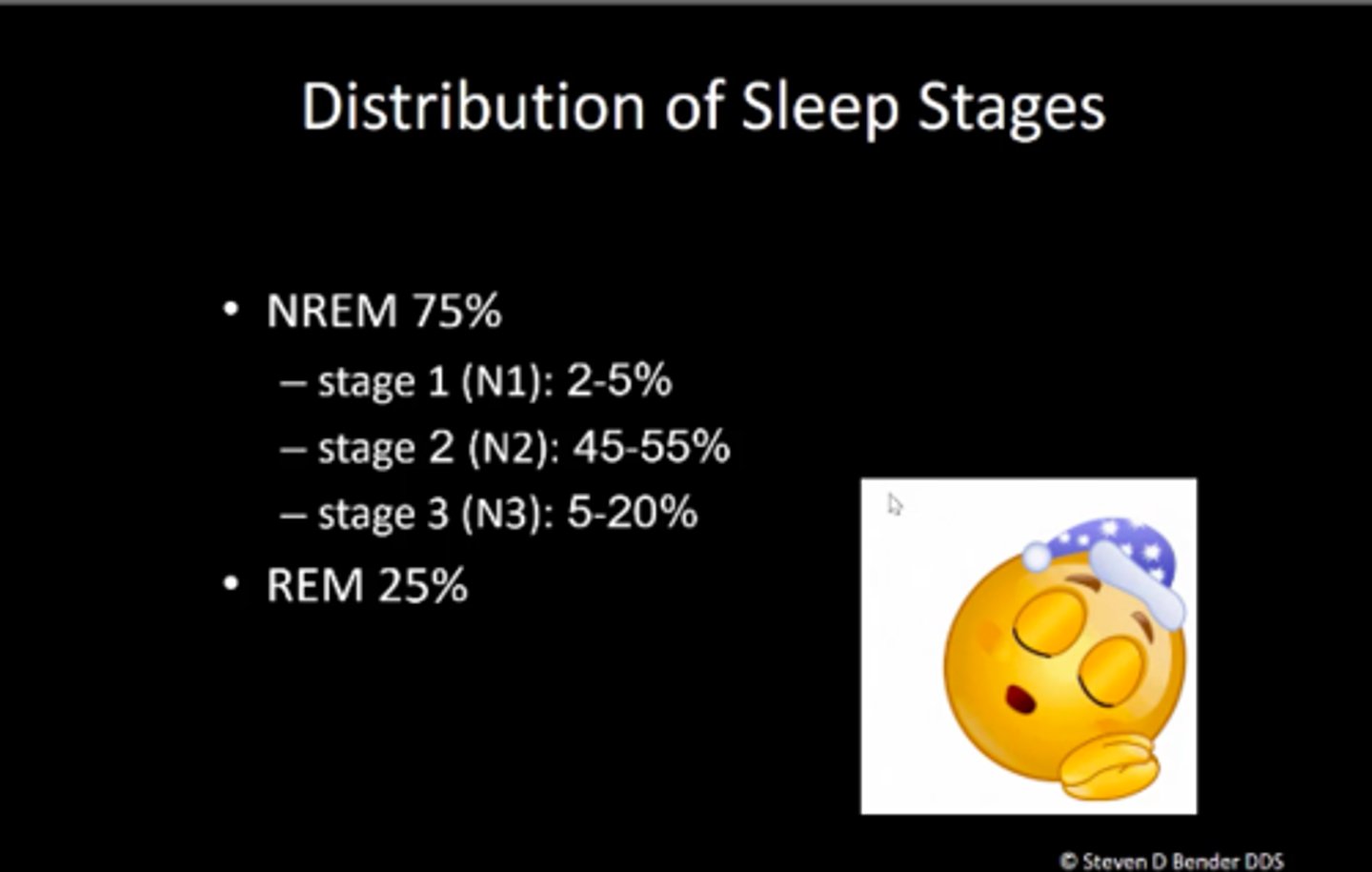
sleep deprivation effects
more rebound rem and slow-wave sleep during recovery.
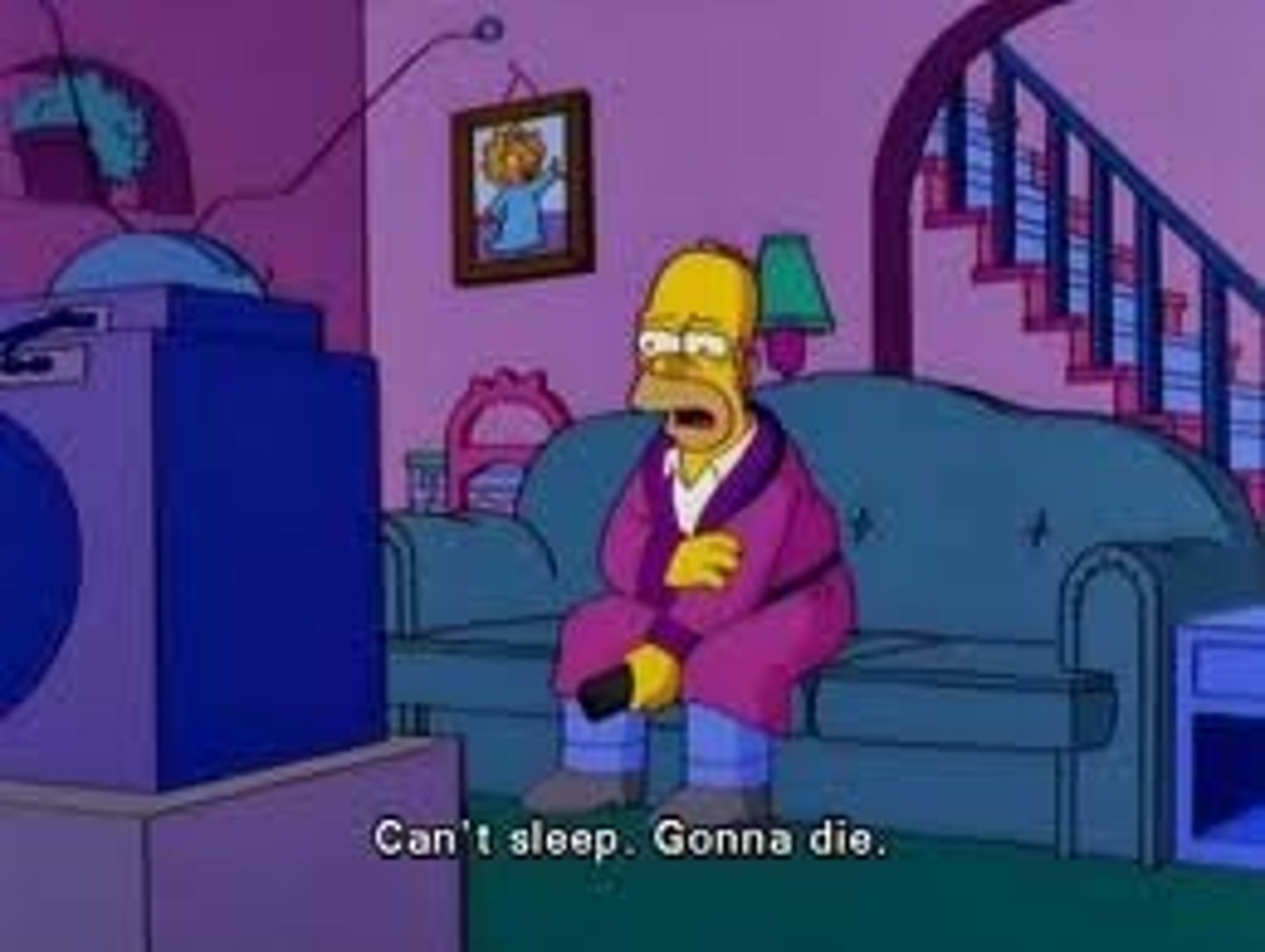
3 theories of sleep
repair/restoration, evolutionary/circadian, and synaptic homeostasis (a synthesis).
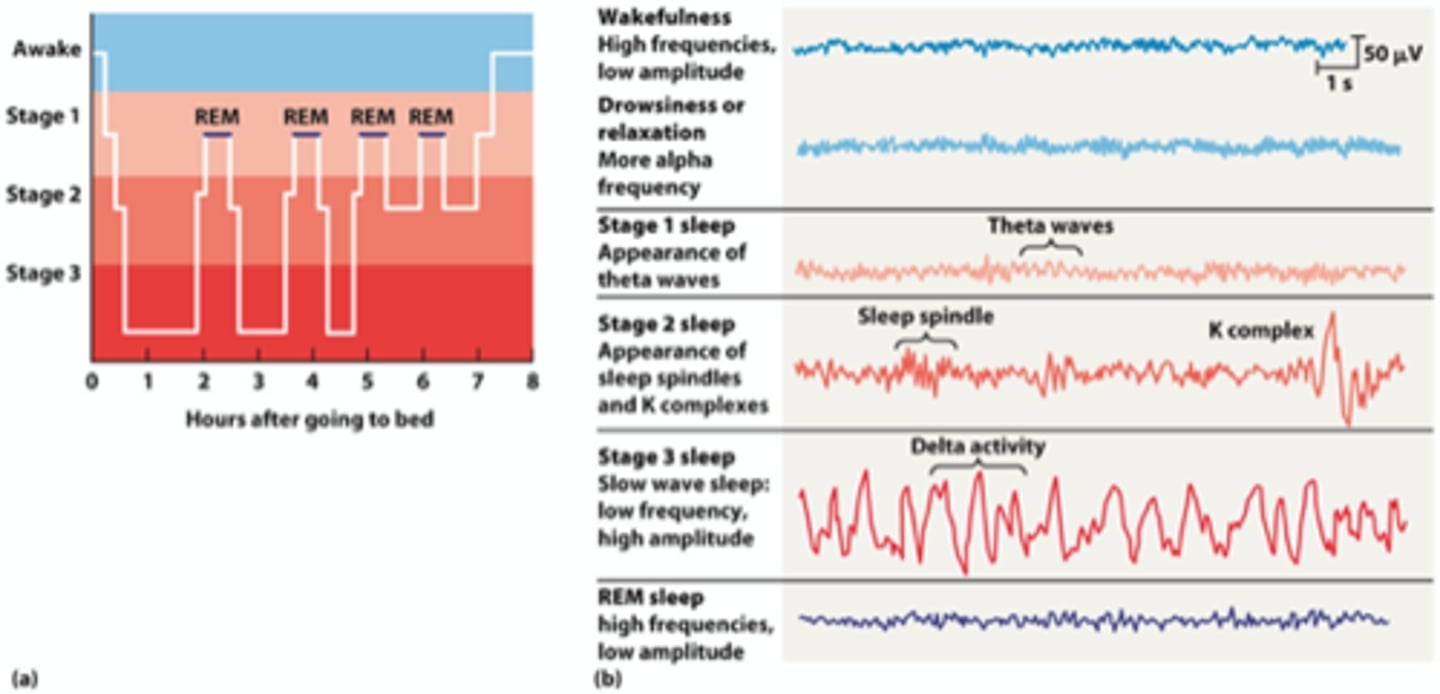
repair and restoration evidence
for: growth hormone release, recovery from fatigue. against: sleep doesn't always correlate with exertion.
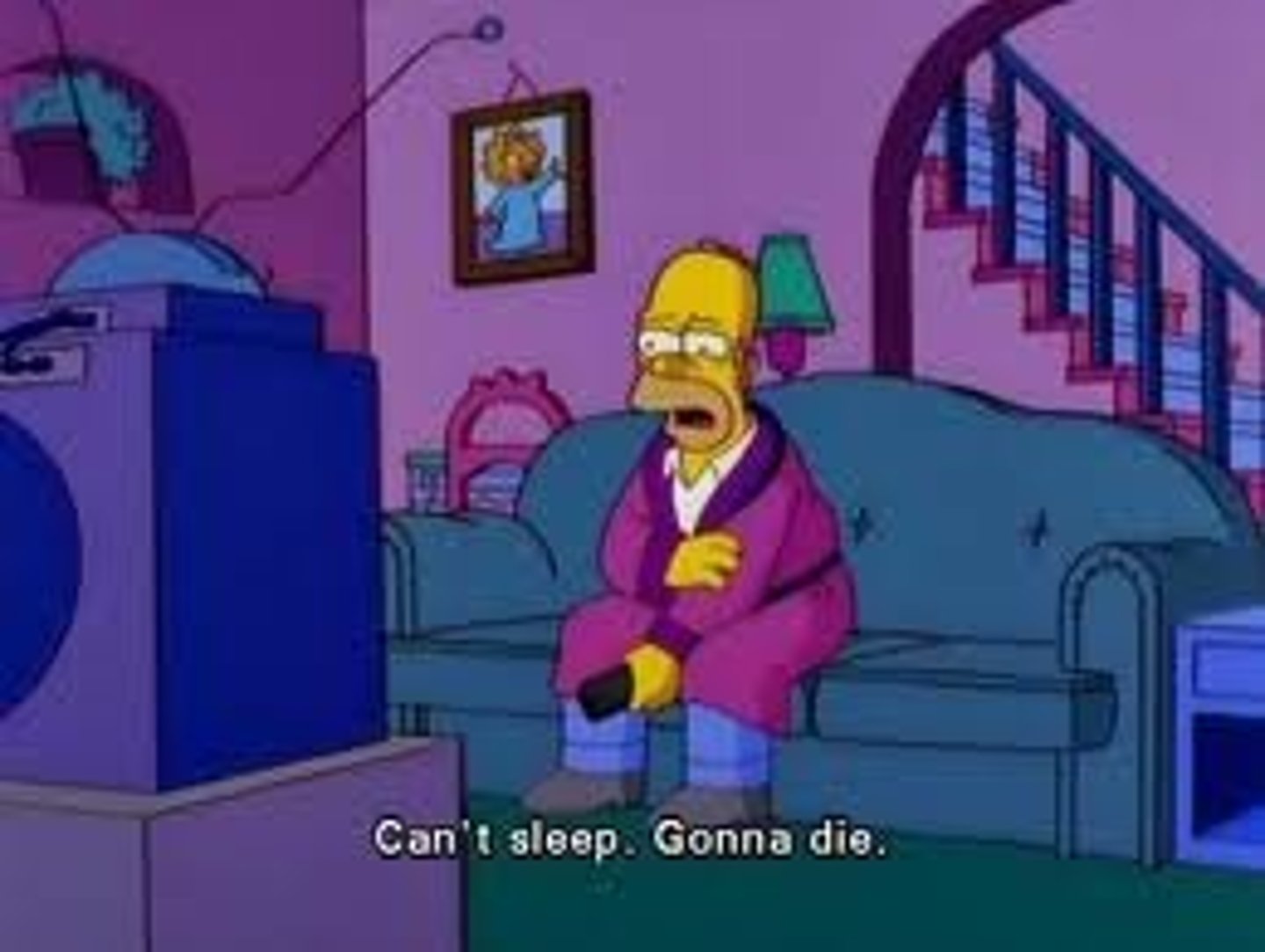
evolutionary theory evidence
for: sleep helps avoid predators. against: sleep can be risky for survival.
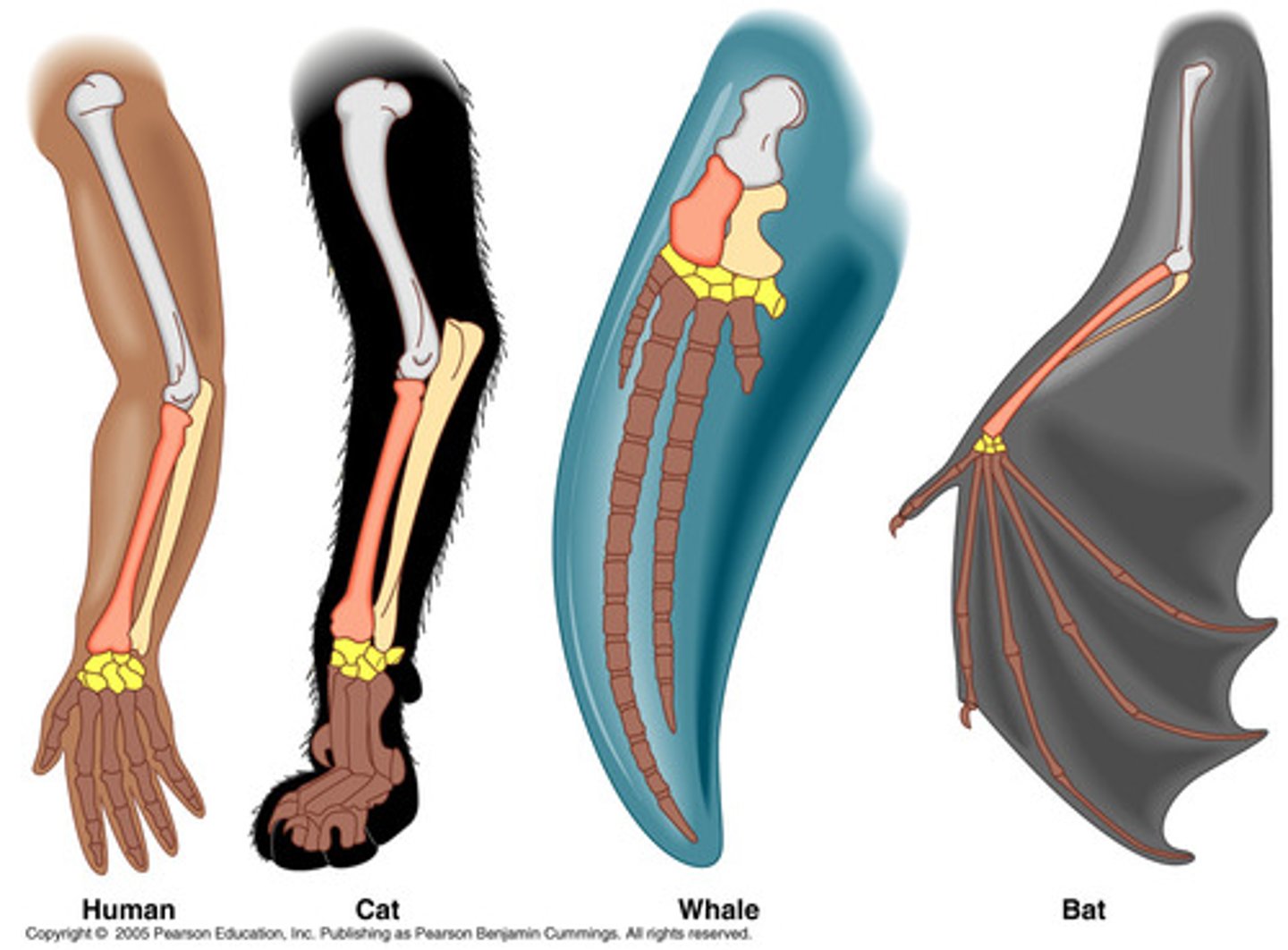
learning during sleep
no; conscious learning requires awareness.
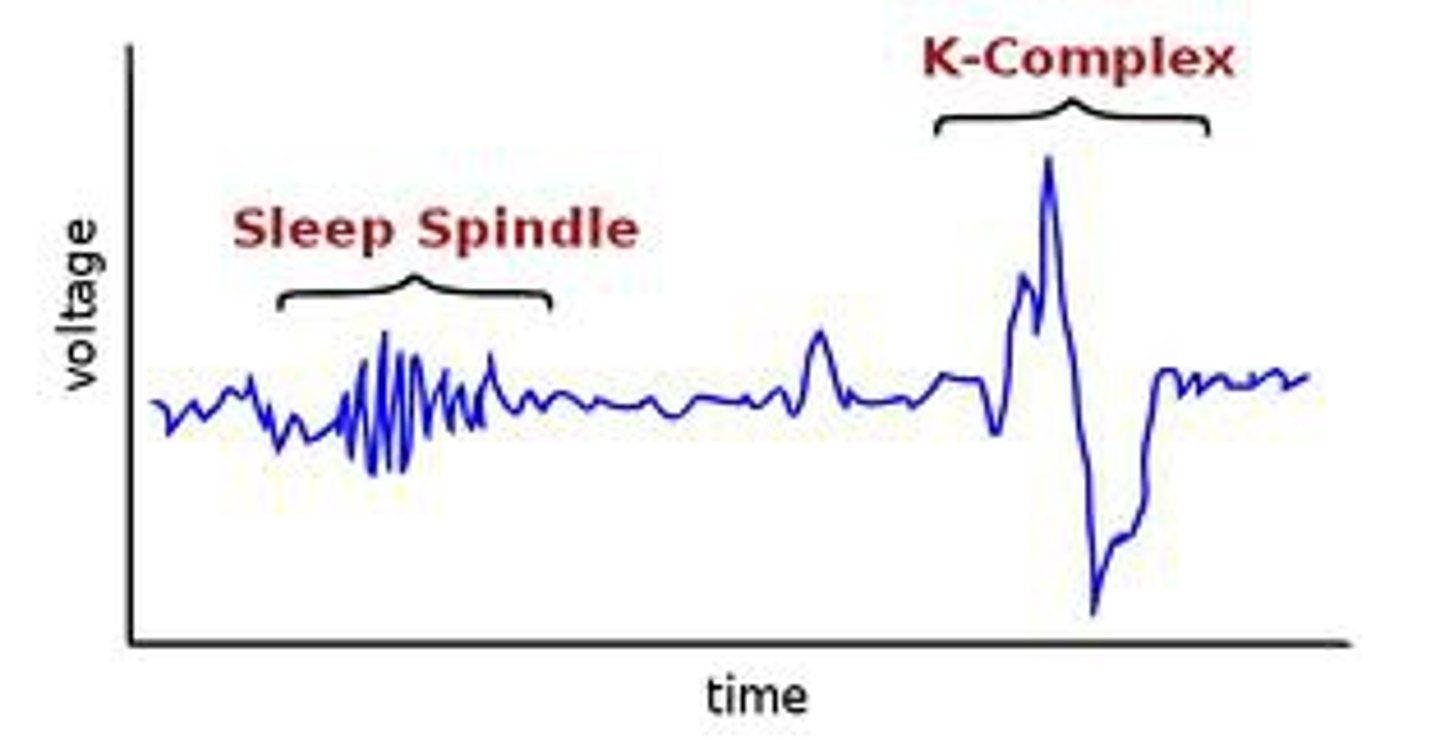
rem sleep and memory
enhances procedural and emotional memory.
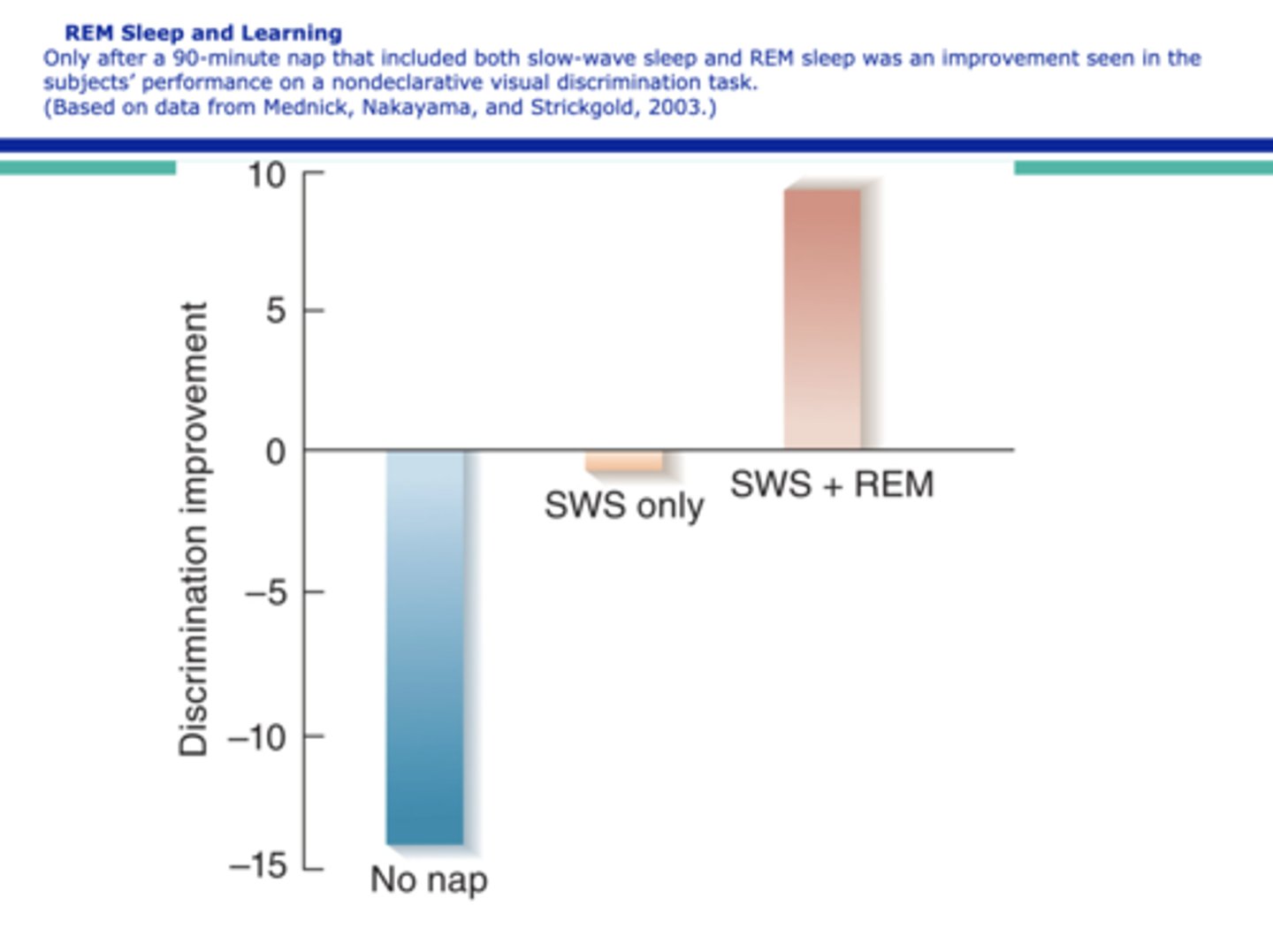
slow-wave sleep and memory
aids declarative (fact-based) memory consolidation.
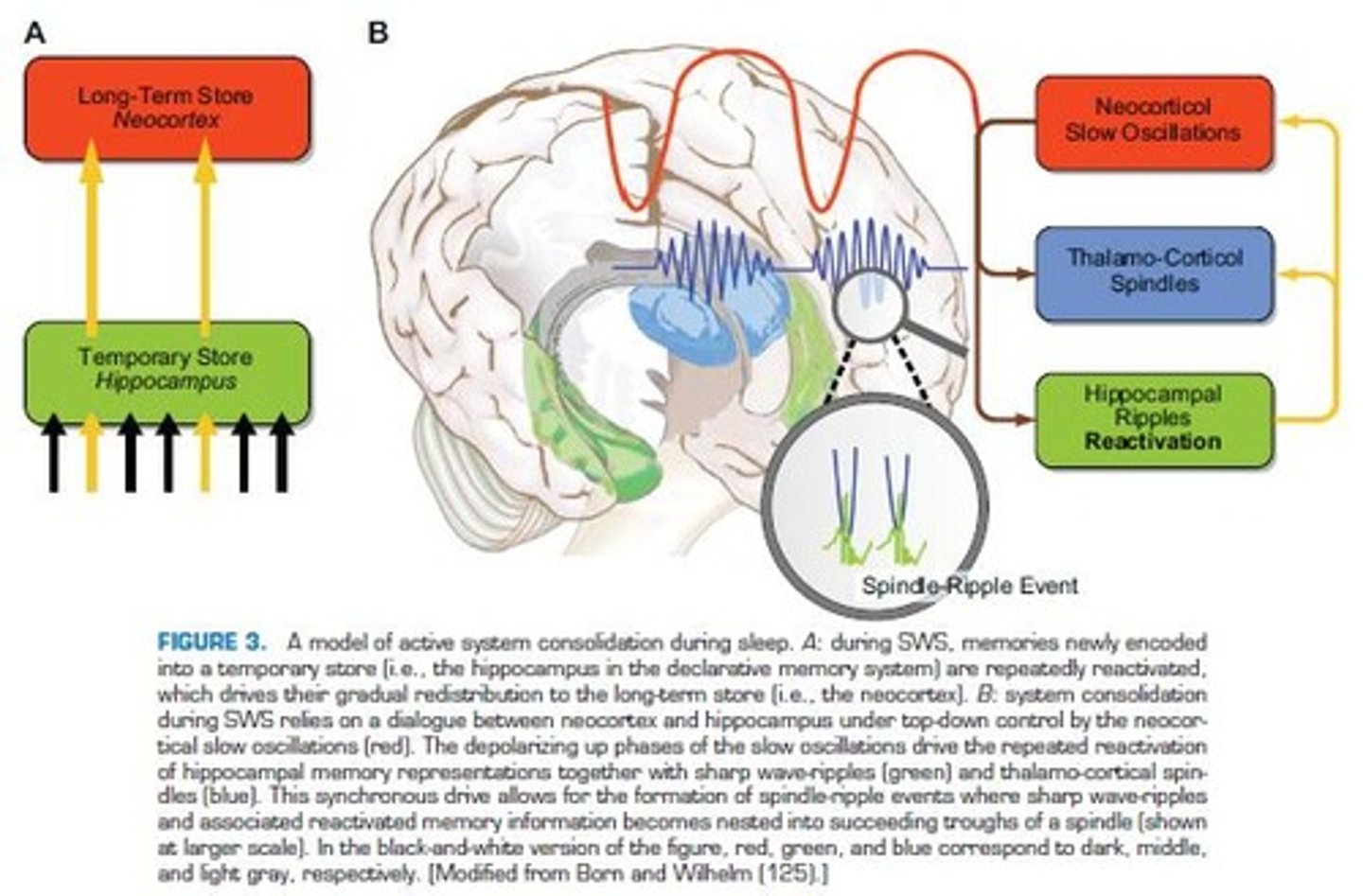
what promotes learning during sleep?
replay of neural patterns (hippocampus) during rem and sws.
sleep across lifespan
more rem in infants; sws decreases with age.
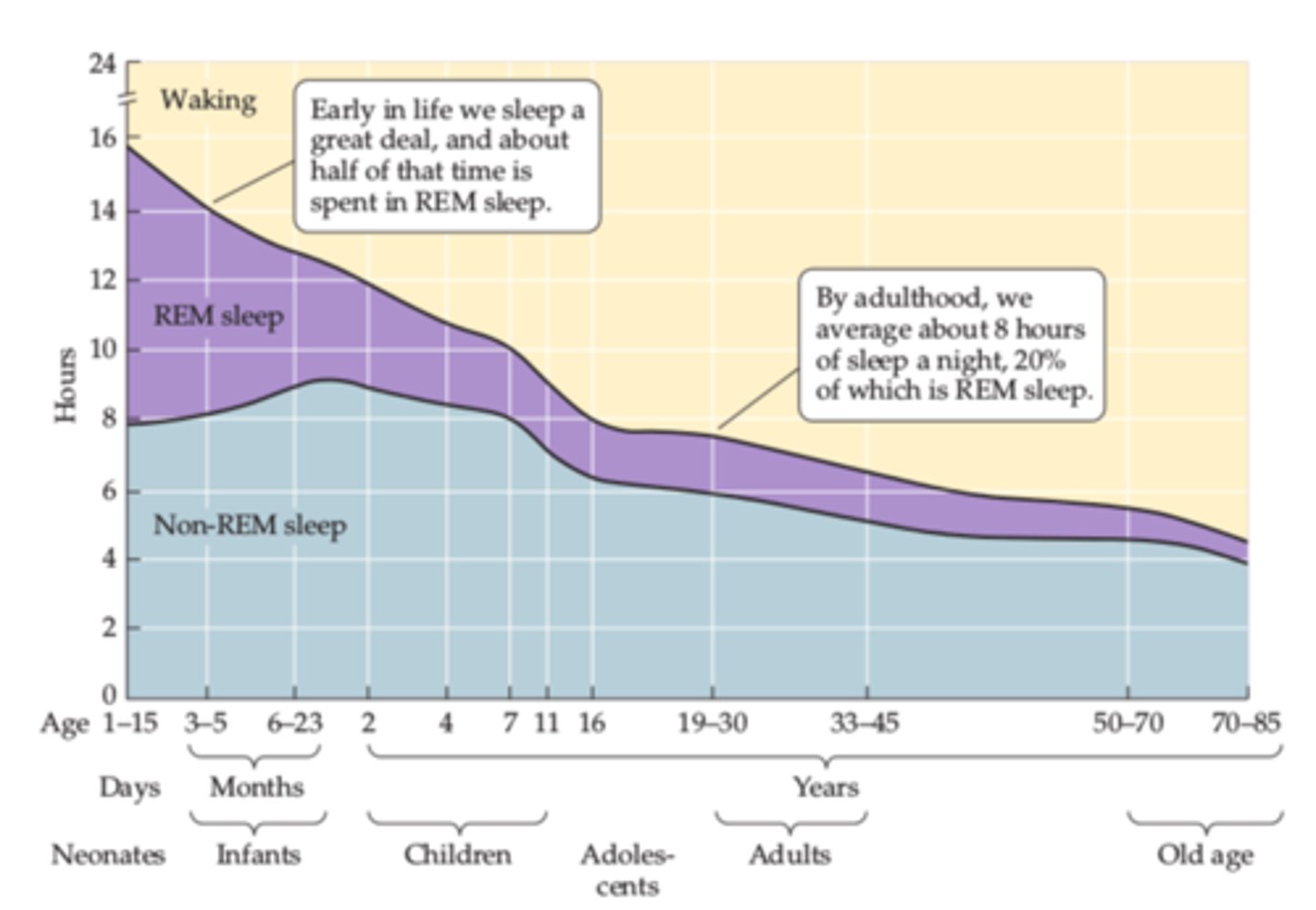
passive sensory theory
sleep is due to reduced sensory input.
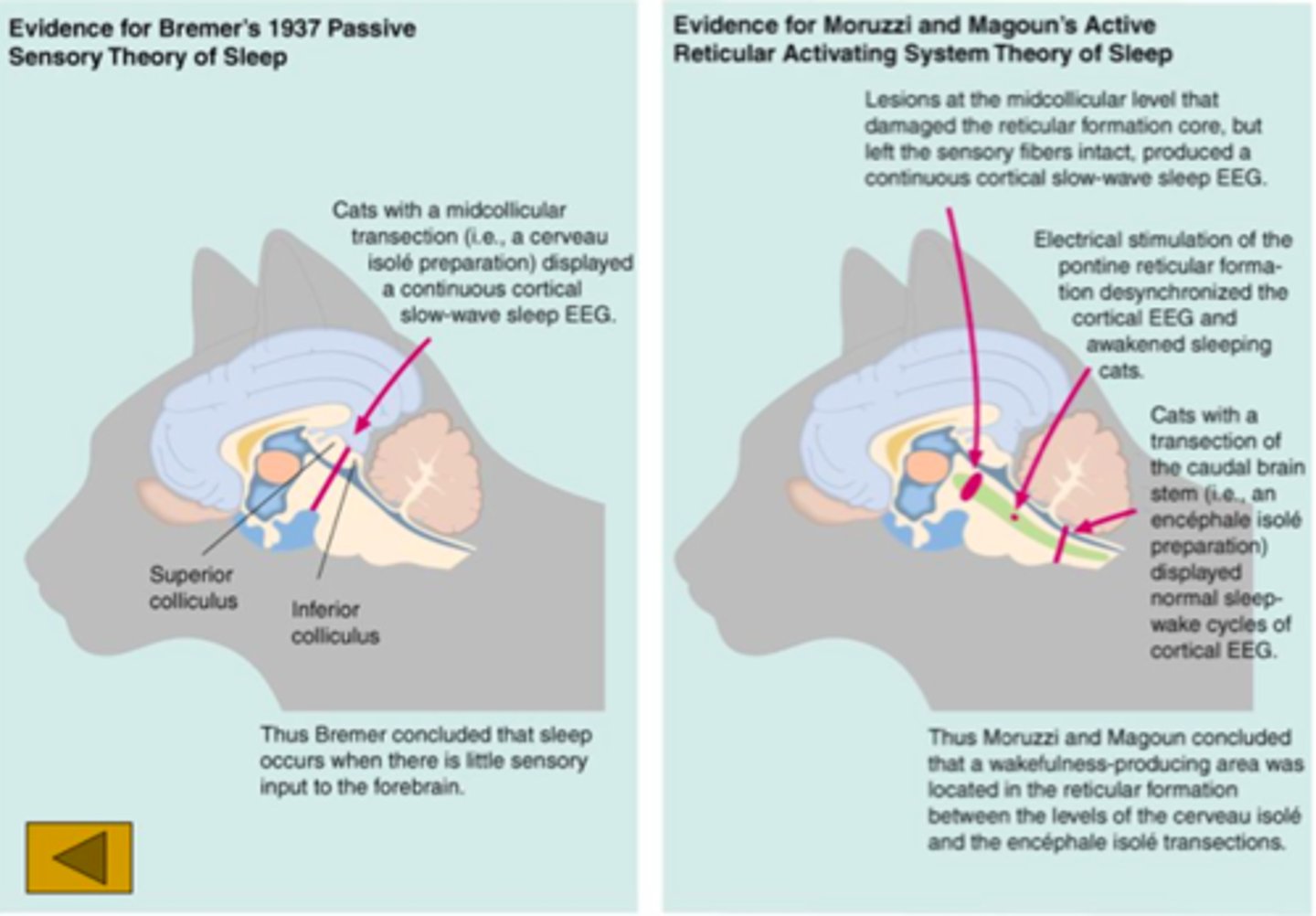
rejection of passive theory
active neural mechanisms promote sleep (e.g., vipoa inhibition).
transection techniques
cerveau isolé: cut at midbrain; eeg shows continuous sleep. encephale isolé: cut at spinal cord; normal sleep cycle. caudal transection: preserves arousal; sleep/wake remains.
reticular activating theory
reticular formation stimulates wakefulness.
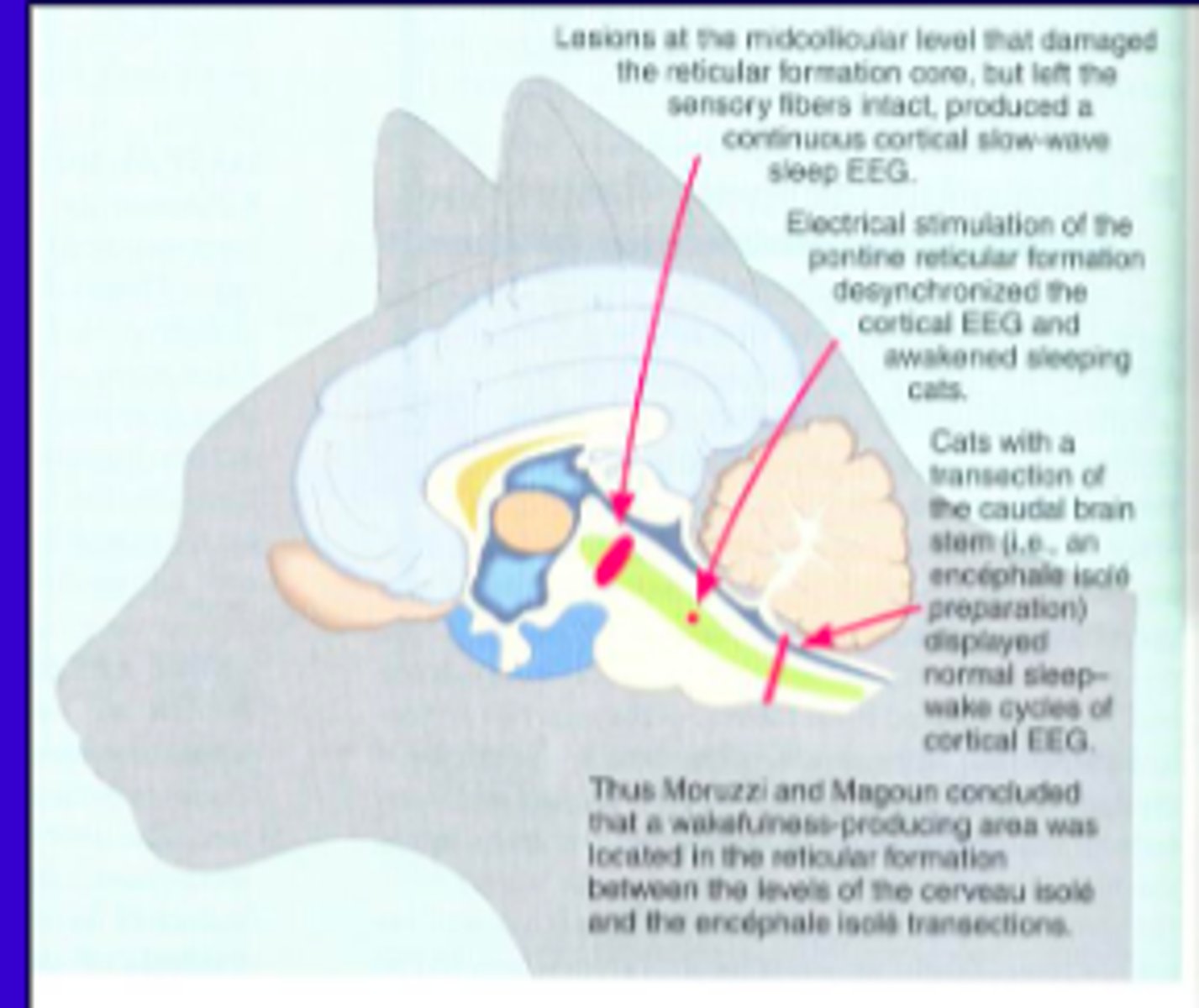
single locus for arousal?
no, arousal is mediated by several interconnected systems.
acetylcholine & cortical desynchrony
enhances alertness and eeg desynchrony in waking and rem.
cholinergic drugs
agonists increase arousal; antagonists reduce it.
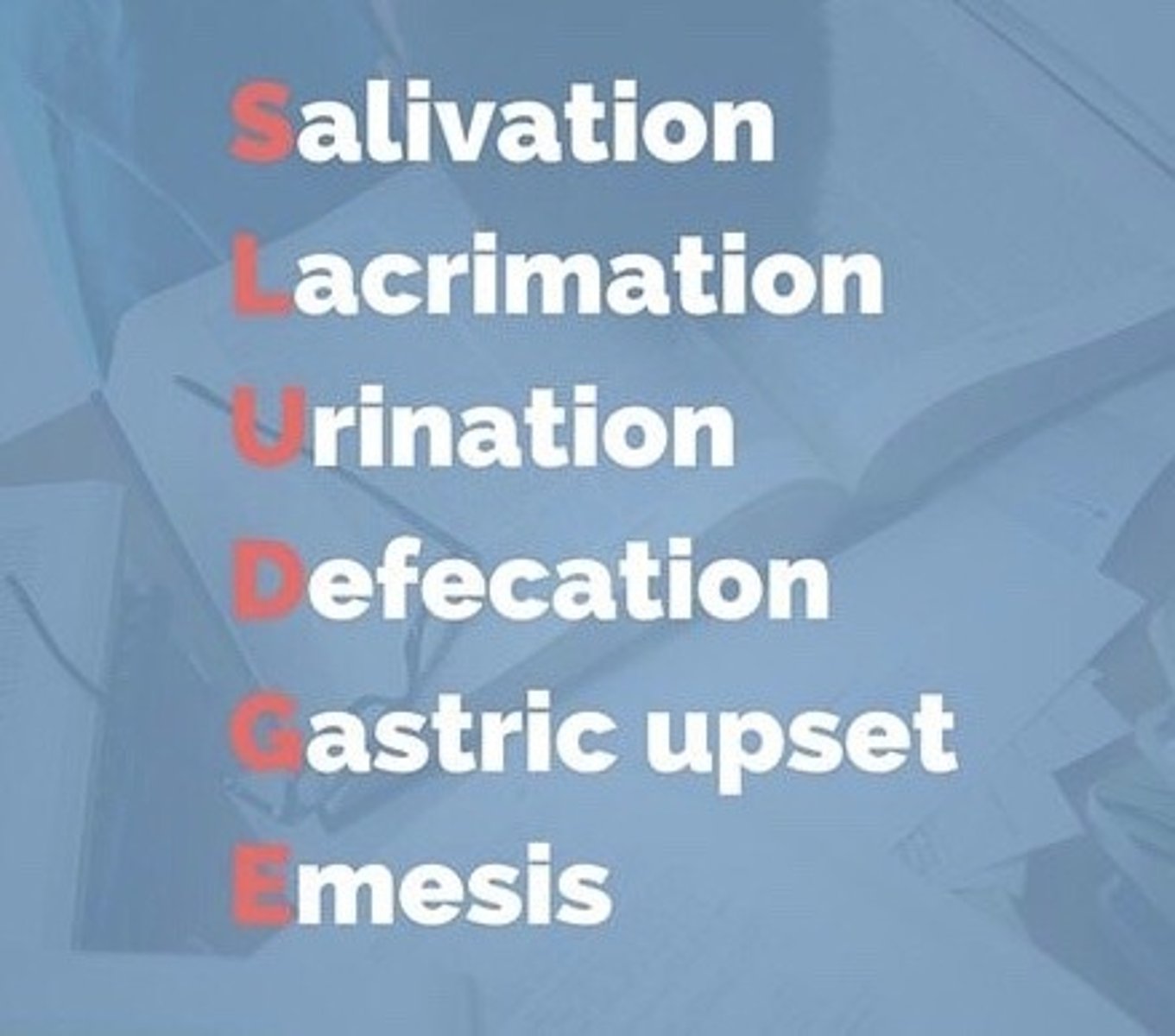
endogenous ach activity
high in waking and rem; low in sws.
norepinephrine (ne) role)
increases alertness and vigilance via locus coeruleus.

adrenergic drugs
stimulation increases arousal; inhibition reduces it.
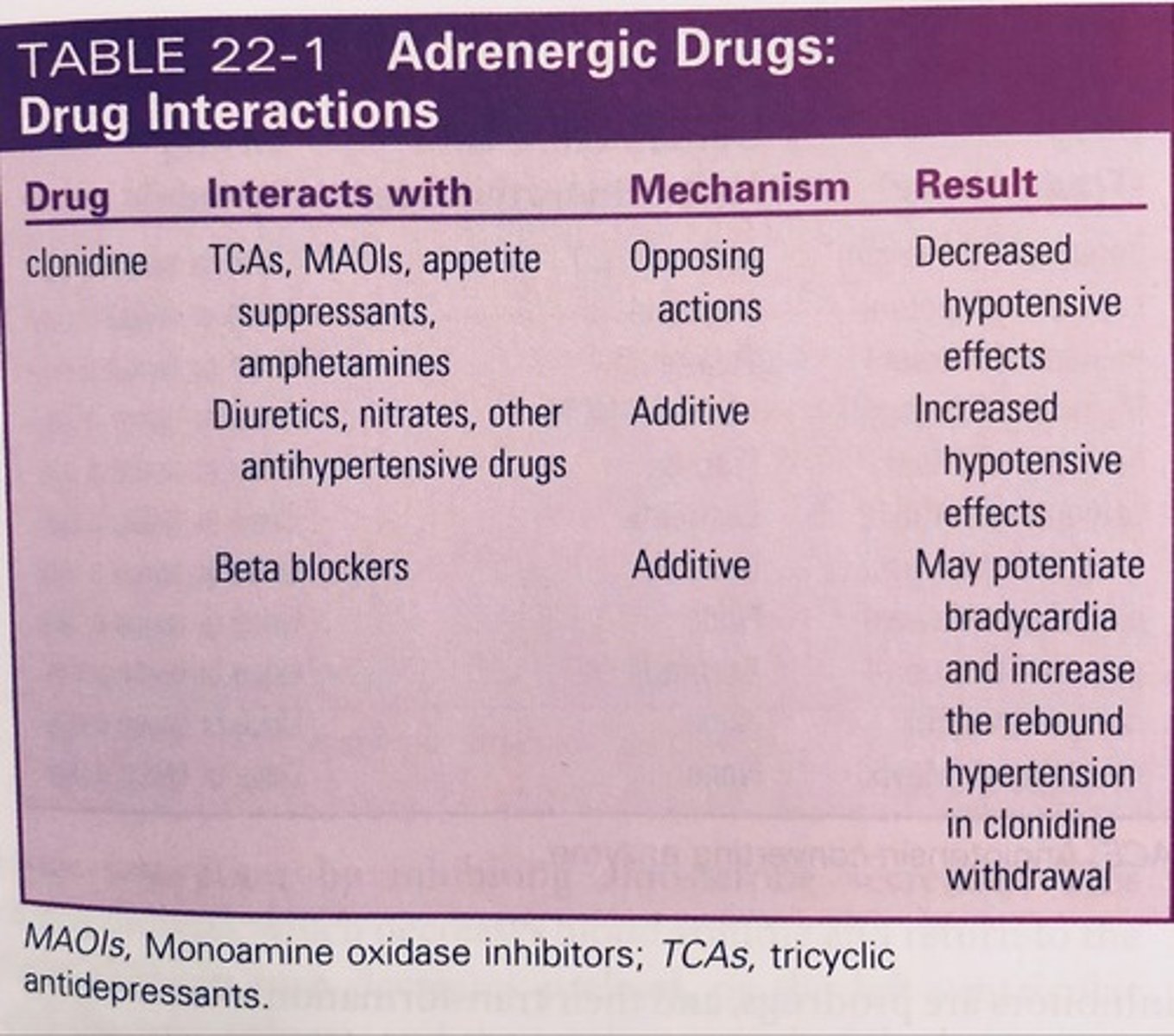
catecholamine agonists
promote alertness (e.g., amphetamine).
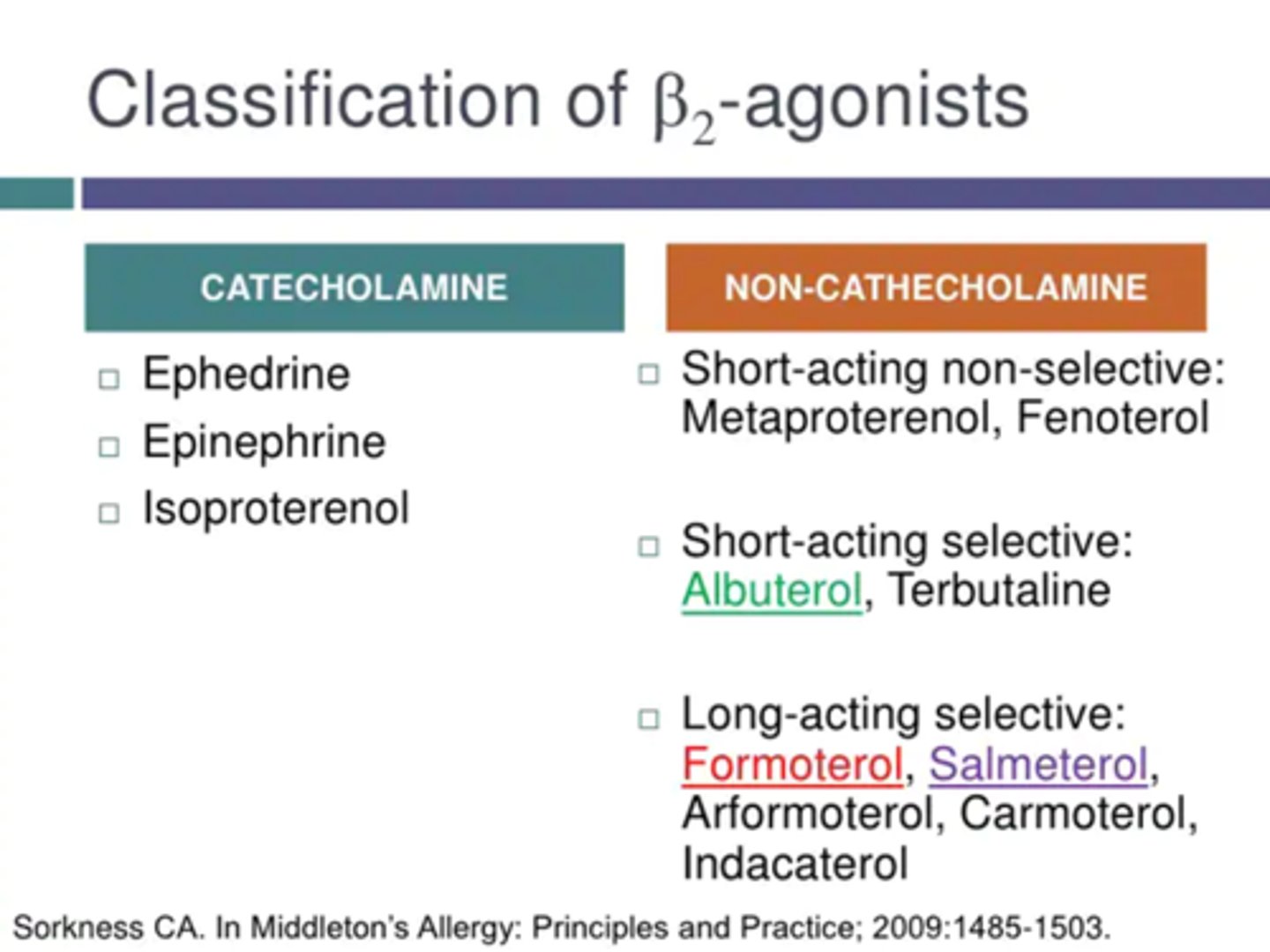
endogenous ne activity
high in waking; low in rem.
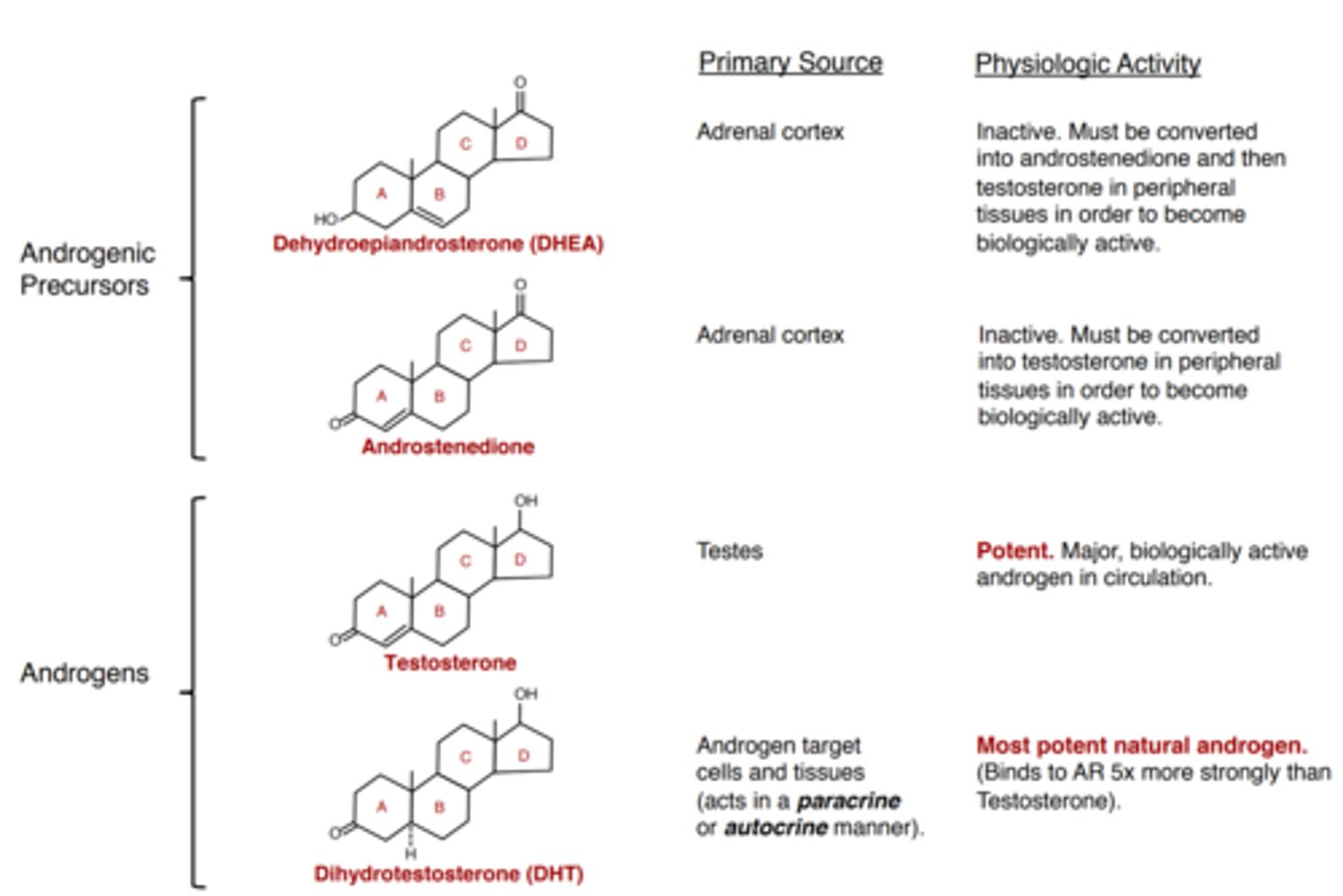
serotonin role
helps initiate sleep but not maintain rem.
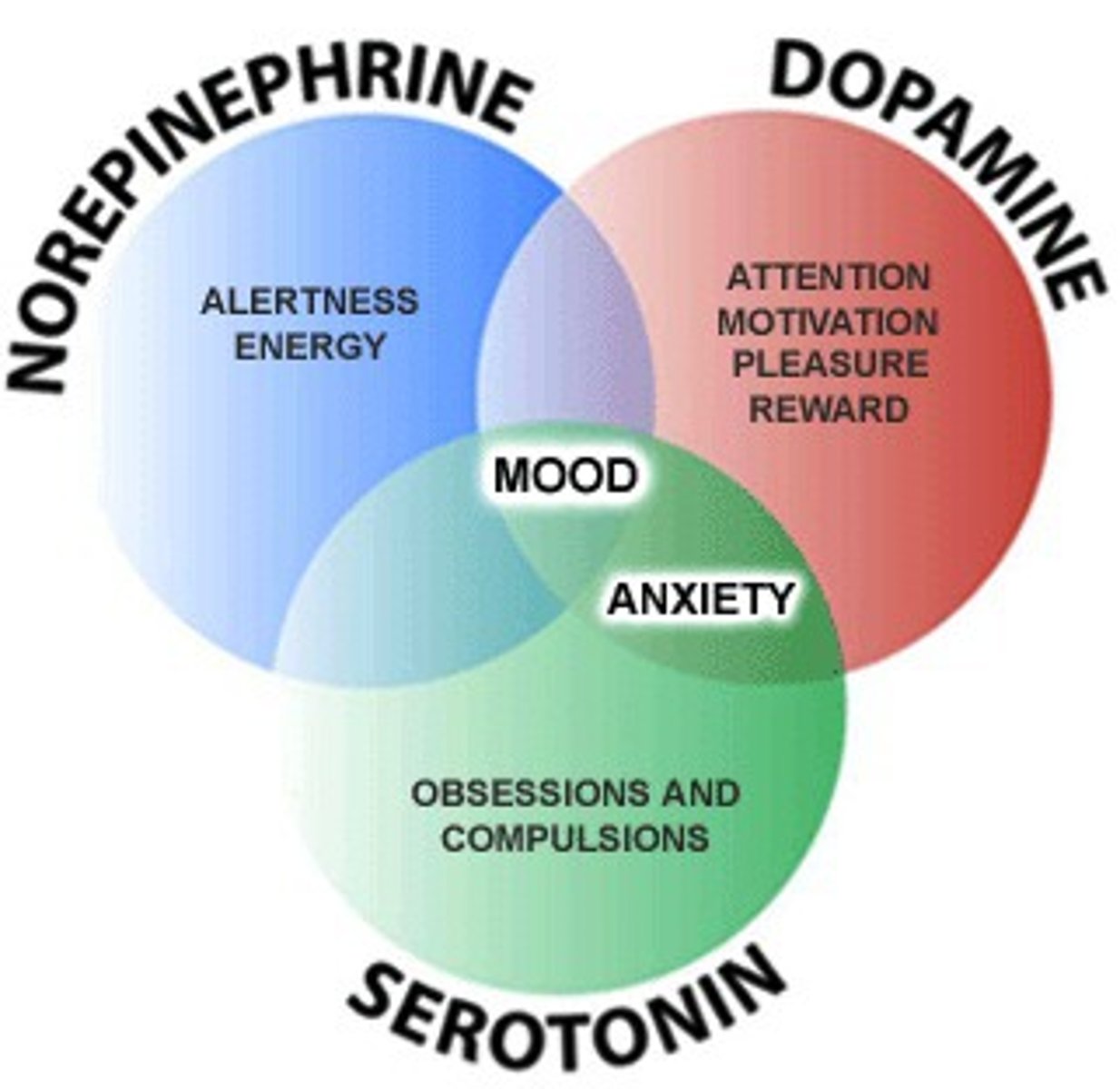
serotonin blockers
reduce cortical arousal.
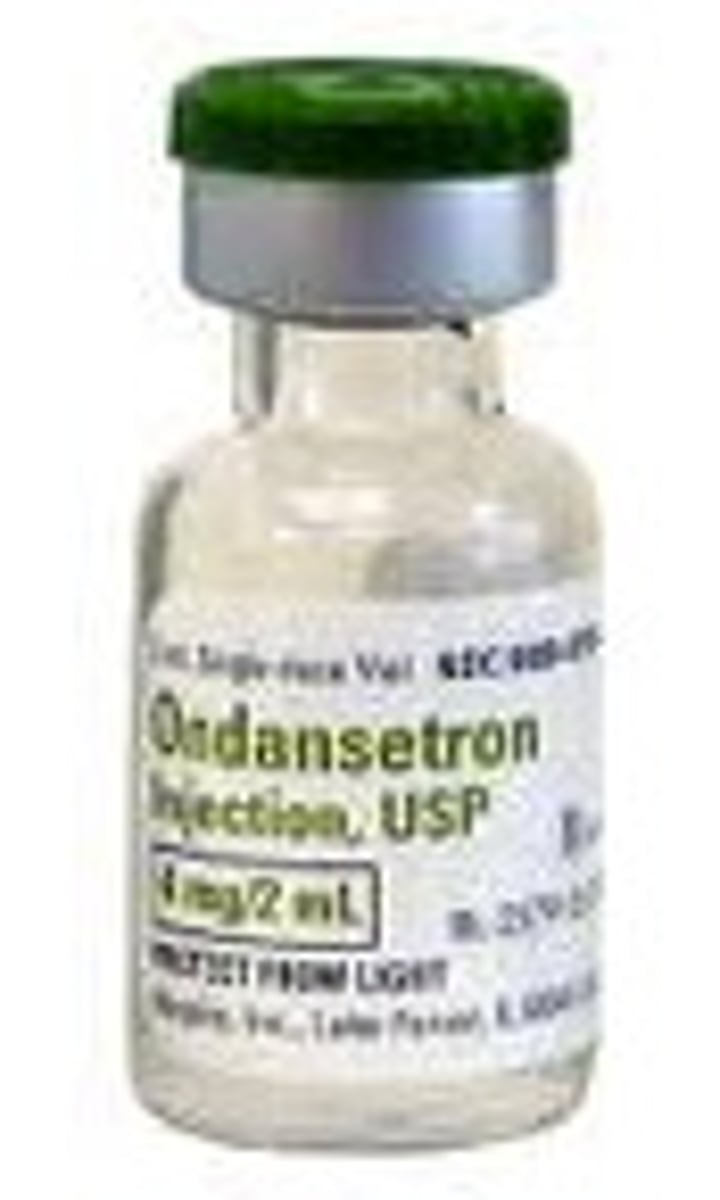
endogenous 5-ht activity
high during wake; decreases in rem.
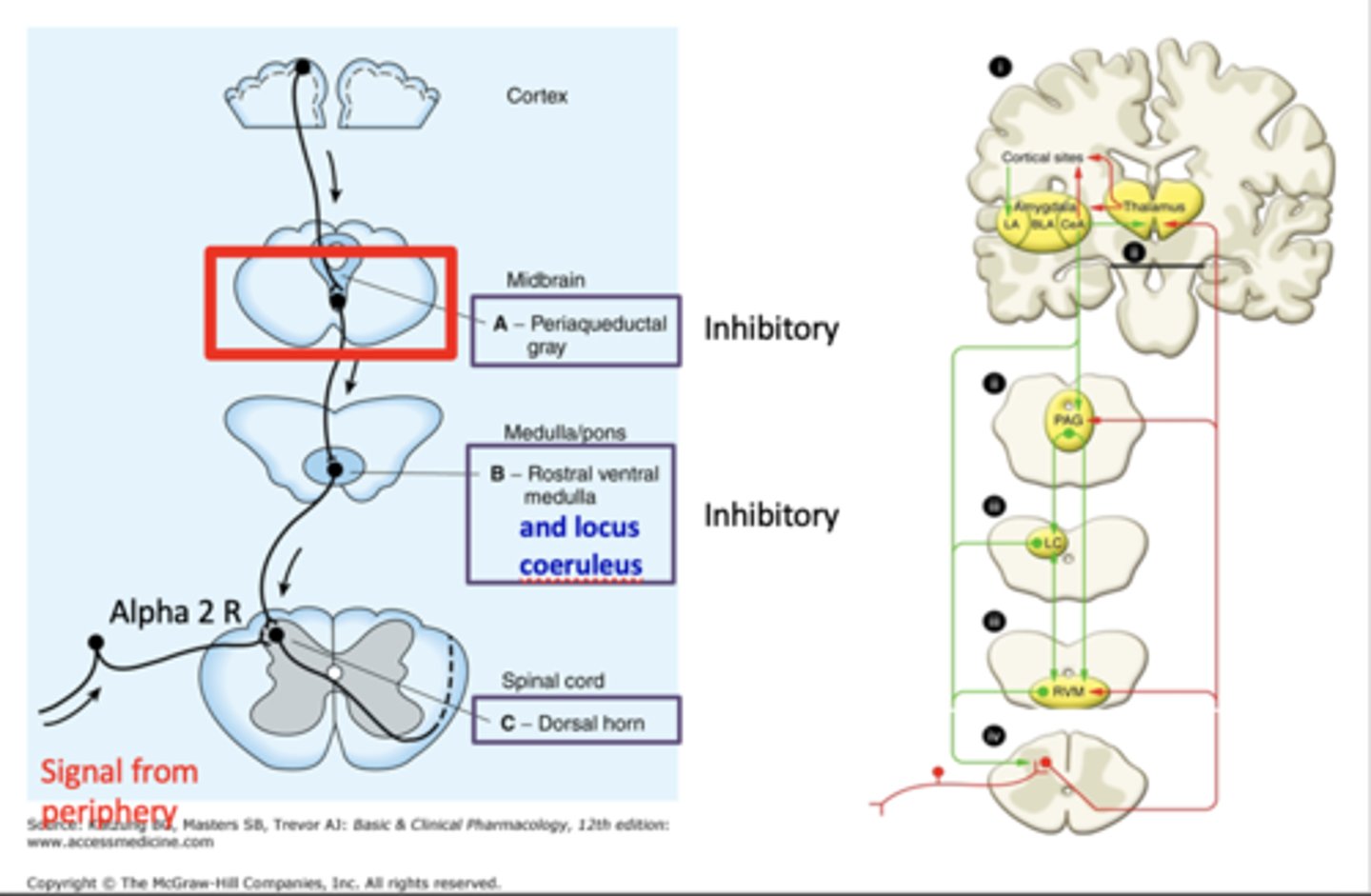
histamine role
promotes wakefulness from the tuberomammillary nucleus.
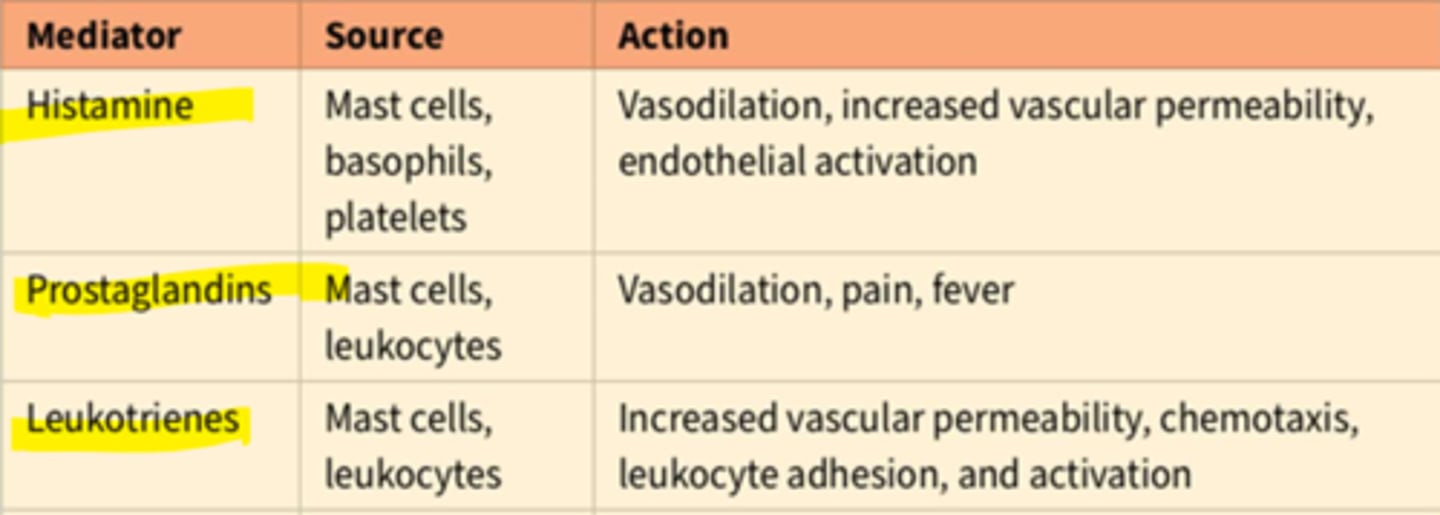
antihistamines
induce drowsiness by blocking histamine receptors.
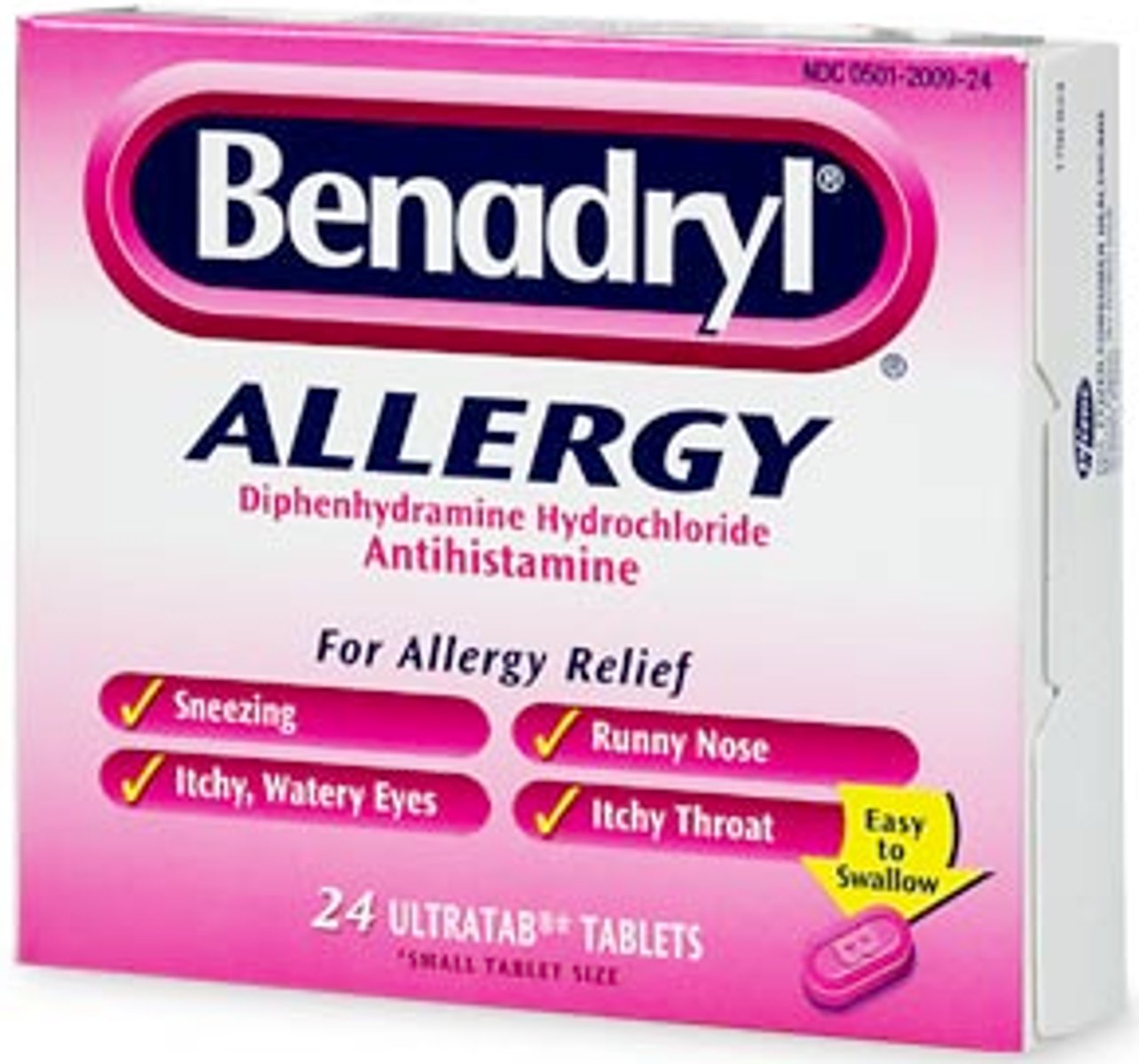
histamine activity
high during wake; low during sleep.

other name for orexin
hypocretin.
orexin in arousal
stabilizes wakefulness and prevents inappropriate sleep.
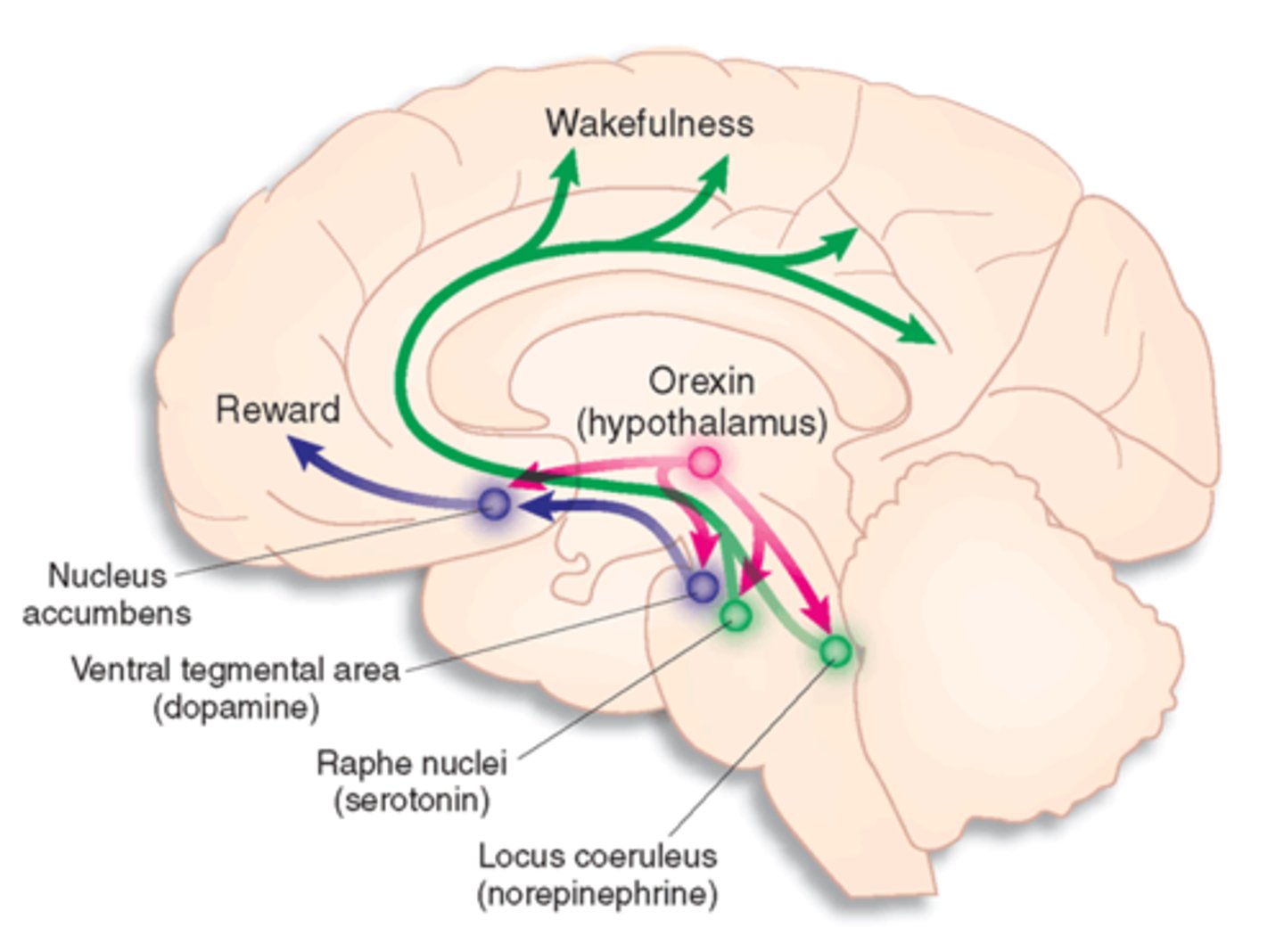
orexin activity
high during wakefulness; low during sleep.

modafinil
promotes wakefulness, likely via orexin and dopamine systems.
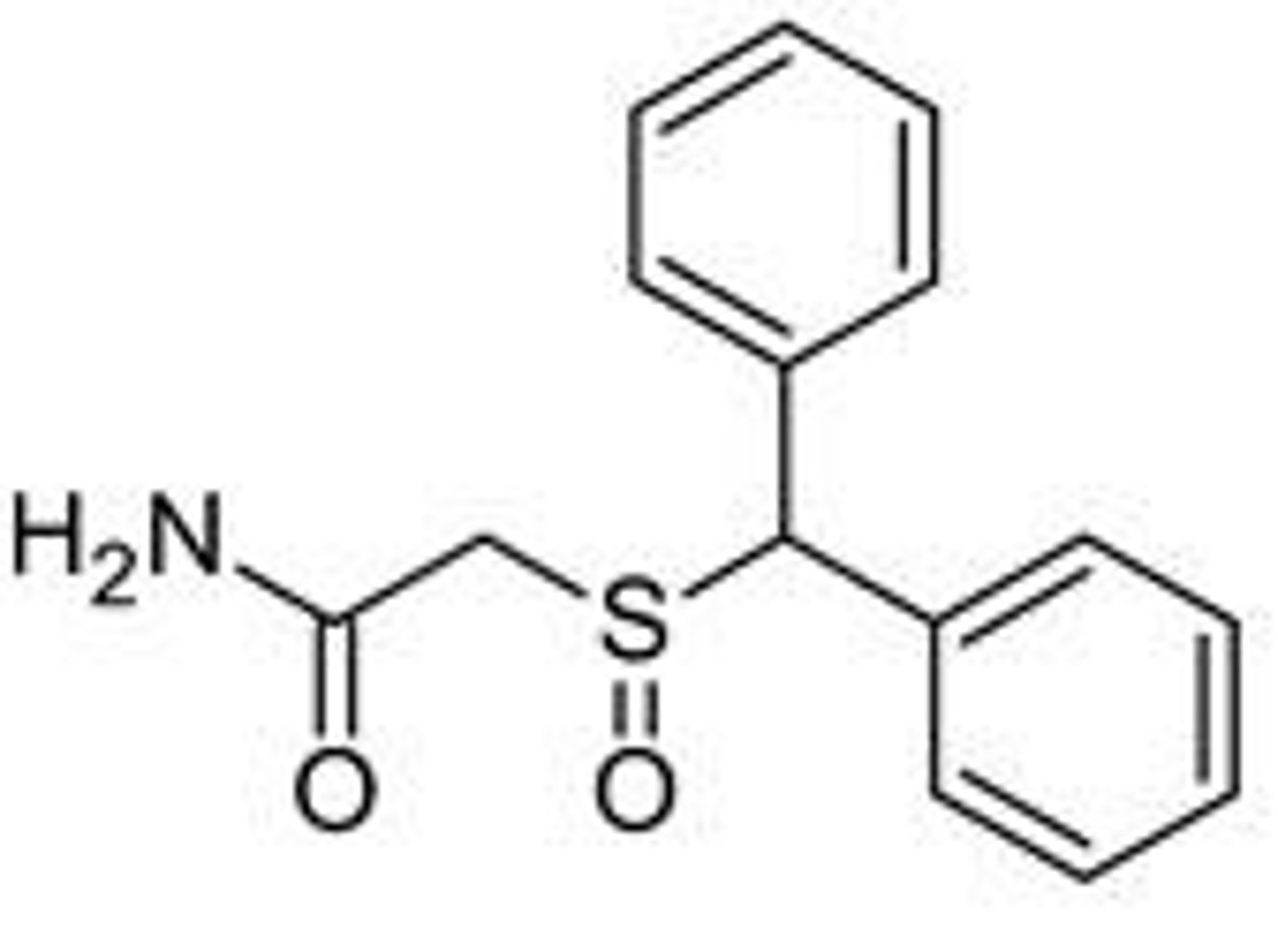
adenosine role
accumulates during wake, promotes sleep.
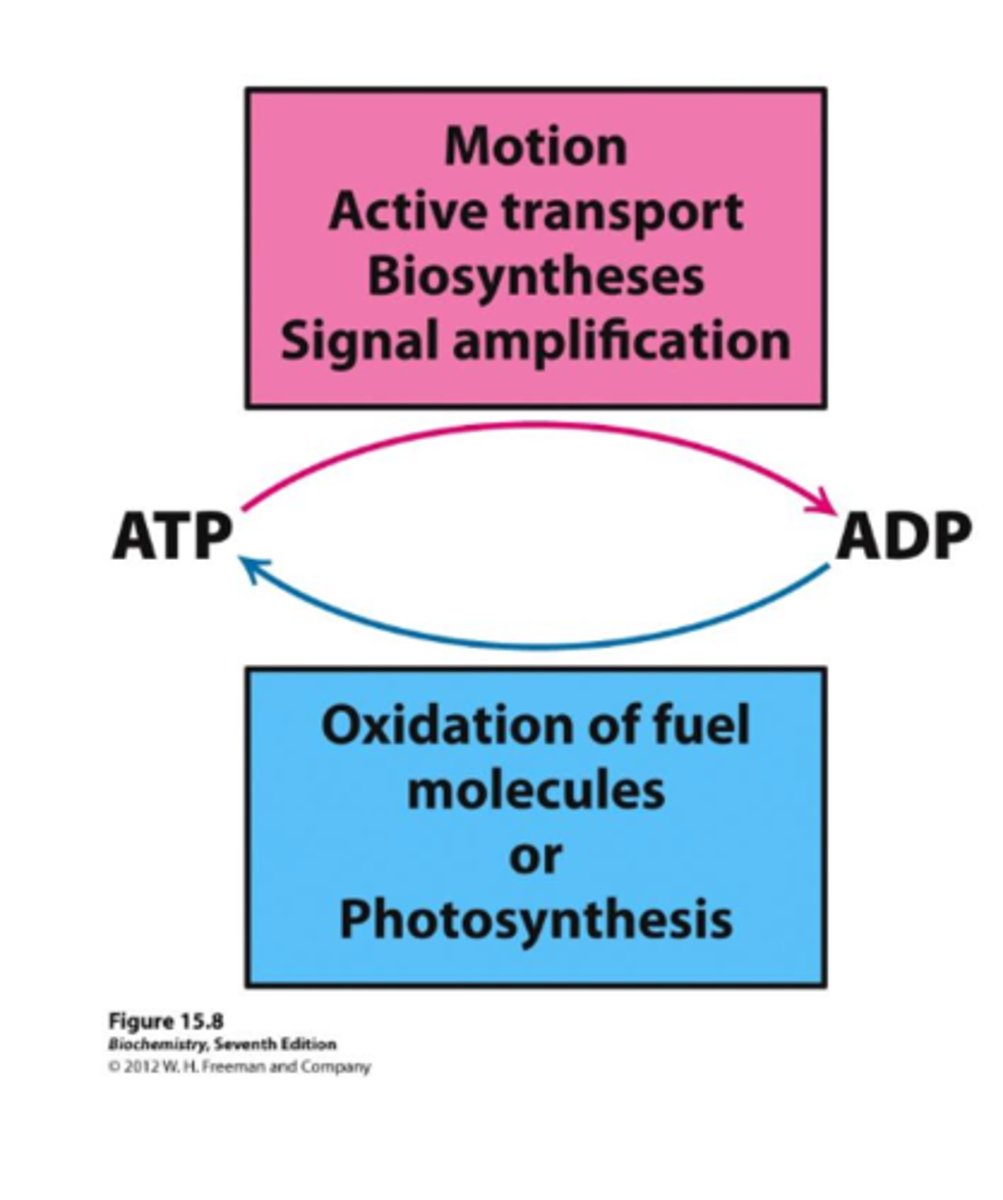
caffeine
blocks adenosine receptors, increases alertness.

adenosinergic activity
high during prolonged wakefulness; reduced by sleep.
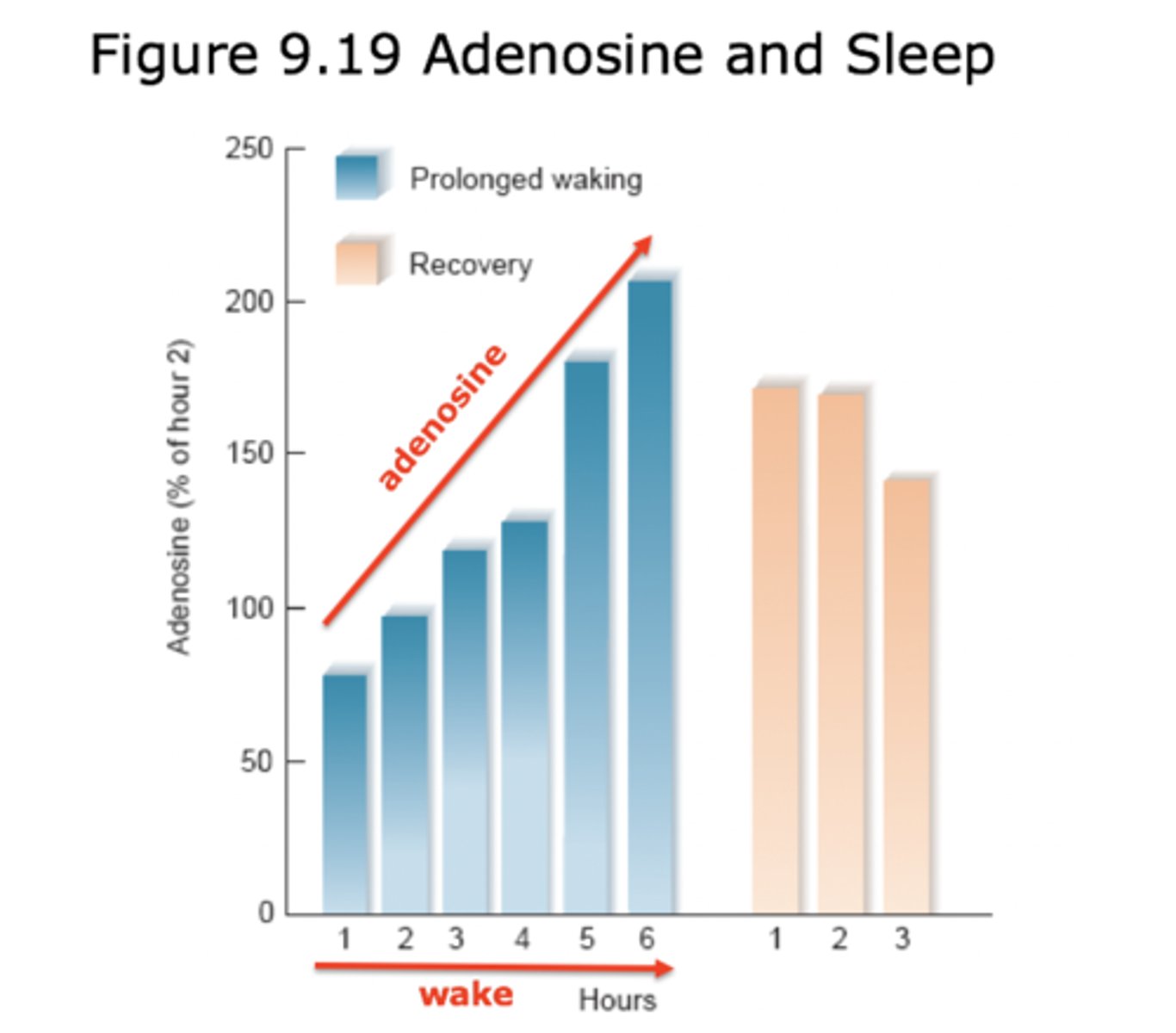
suprachiasmatic nucleus (scn)
in hypothalamus; master circadian clock.
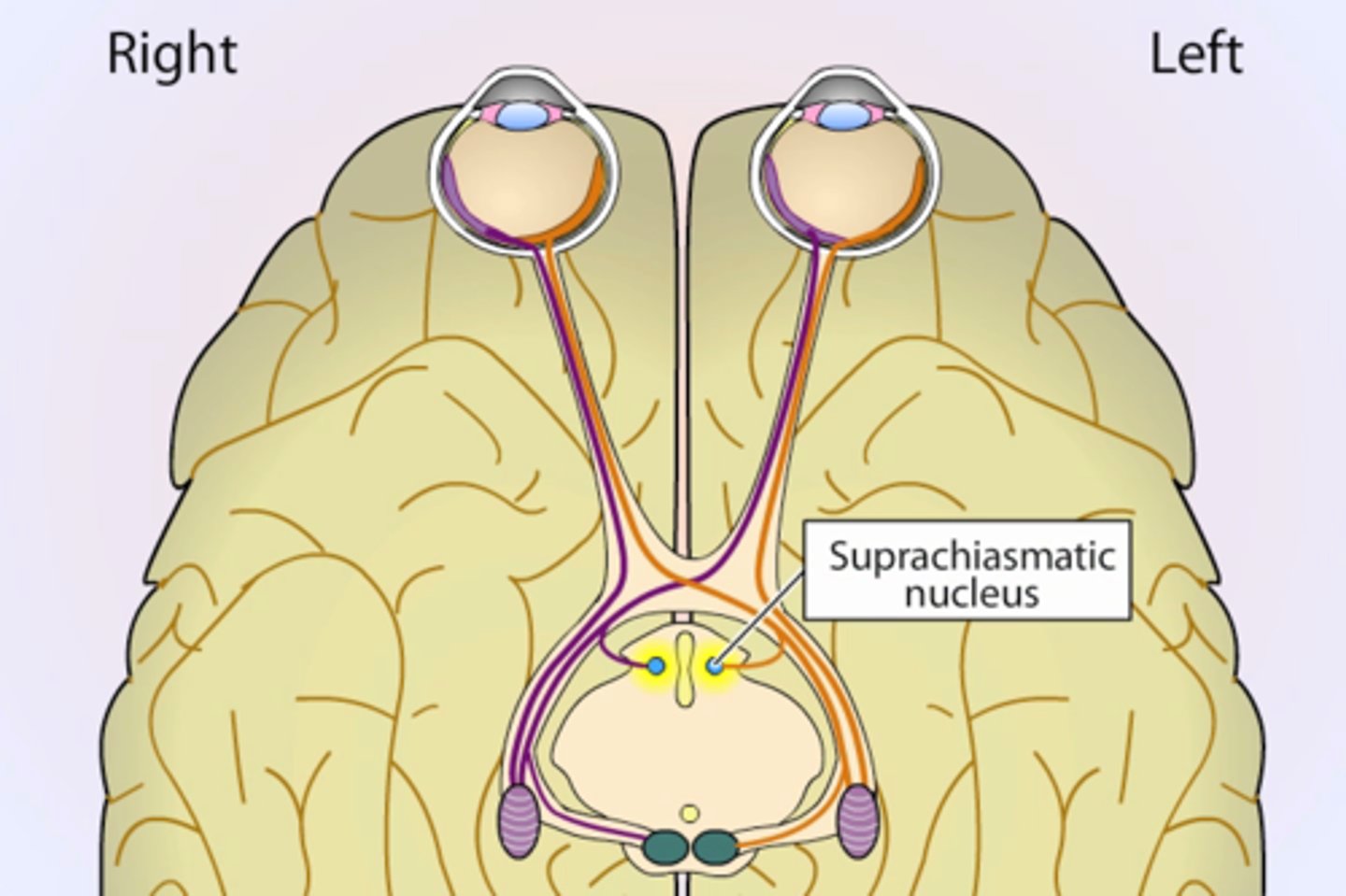
scn input
retinohypothalamic tract, signals from retinal ganglion cells.
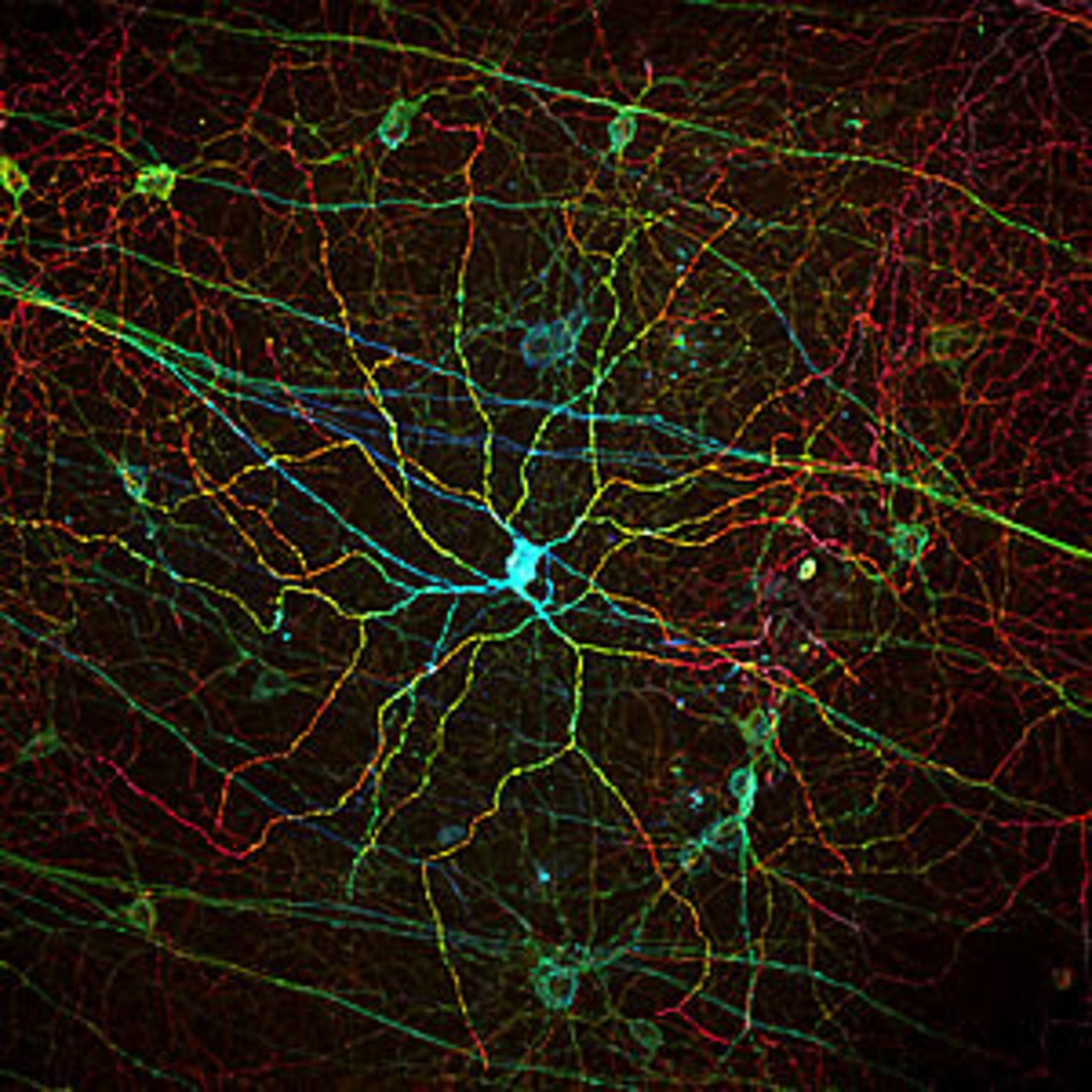
melanopsin
light-sensitive pigment in retinal ganglion cells that signal the scn.
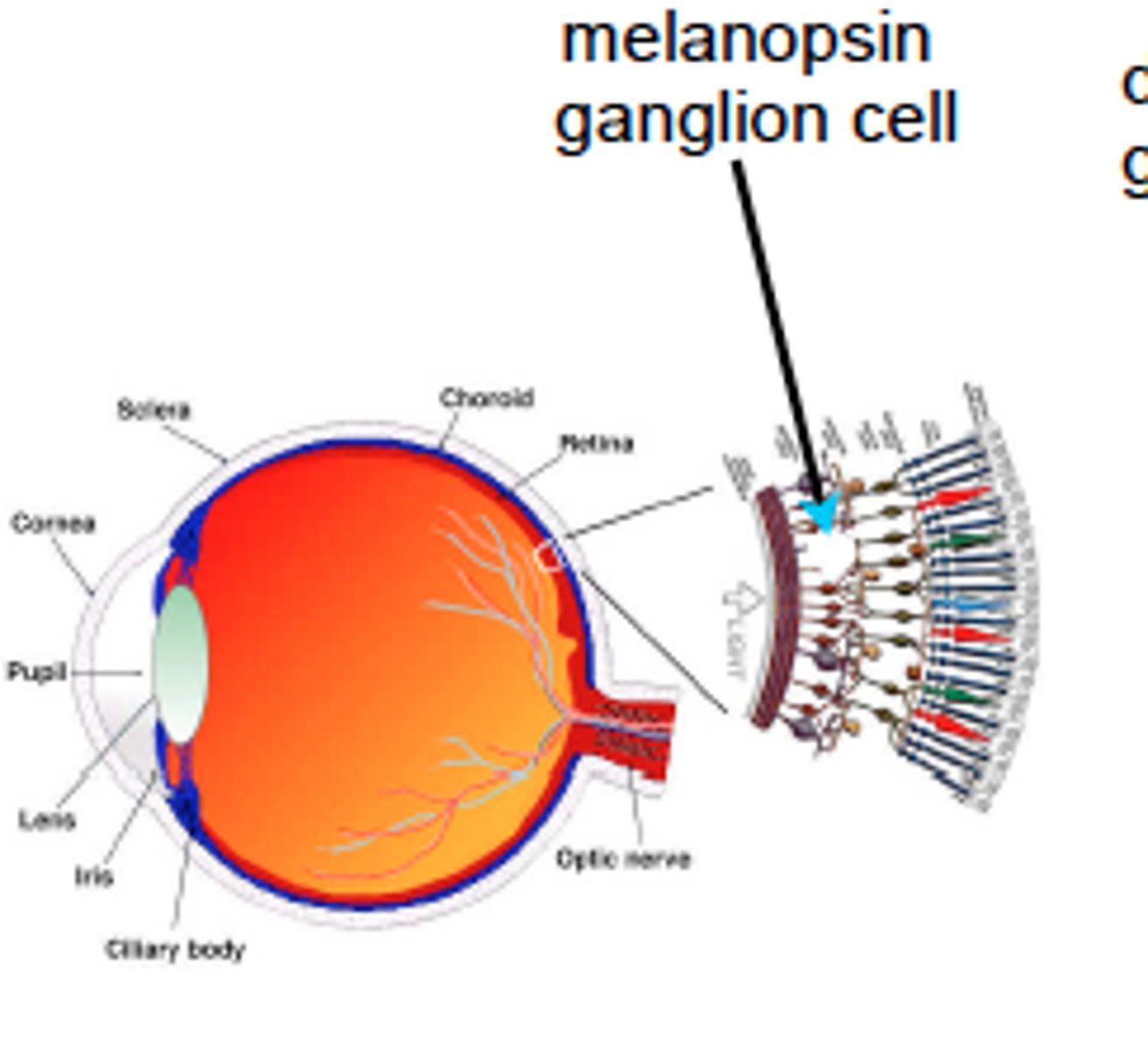
scn pacemaker activity
neurons show ~24-hour rhythms in electrical activity.
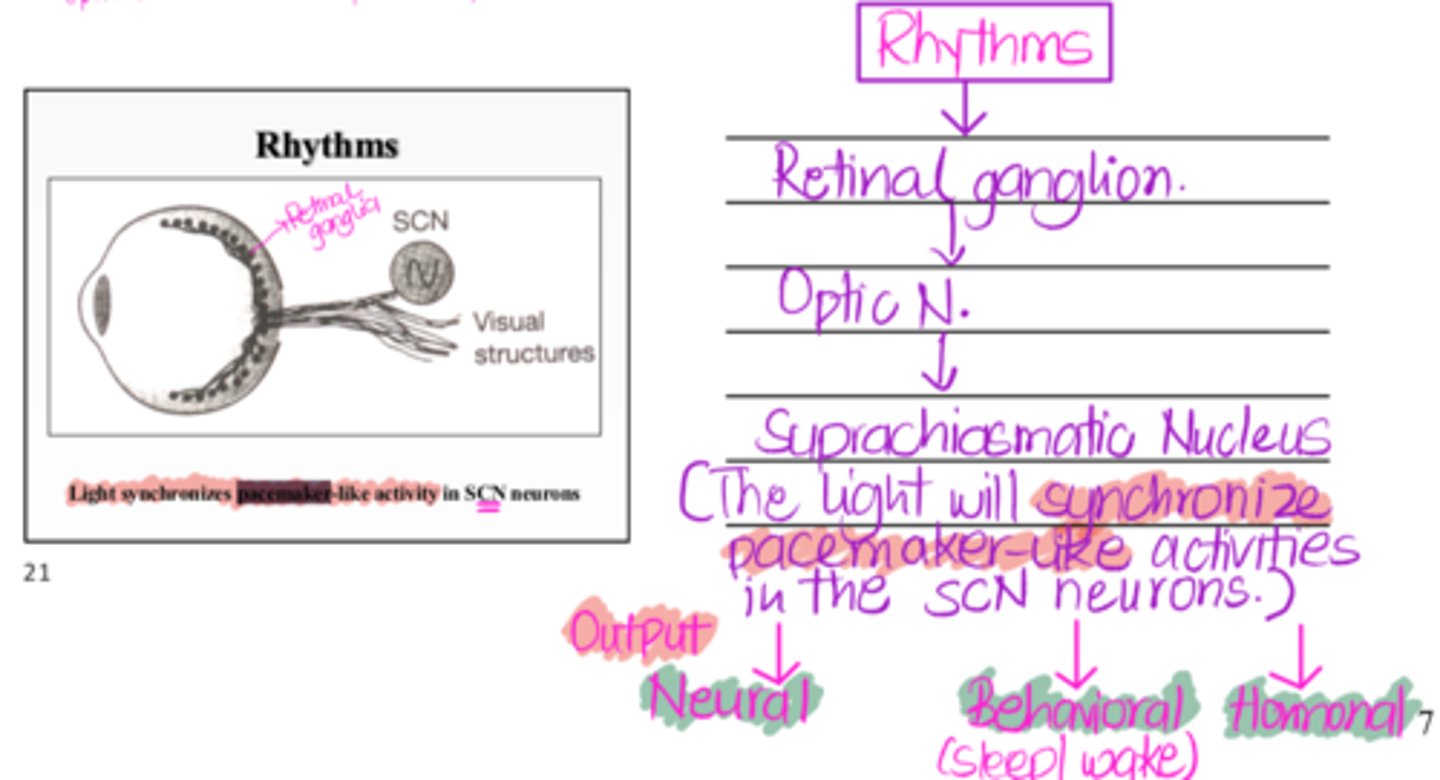
scn genetic mechanisms
clock genes (e.g., per, cry, bmal1) regulate circadian cycles.
chronotype
individual differences in circadian preference (morning/evening).
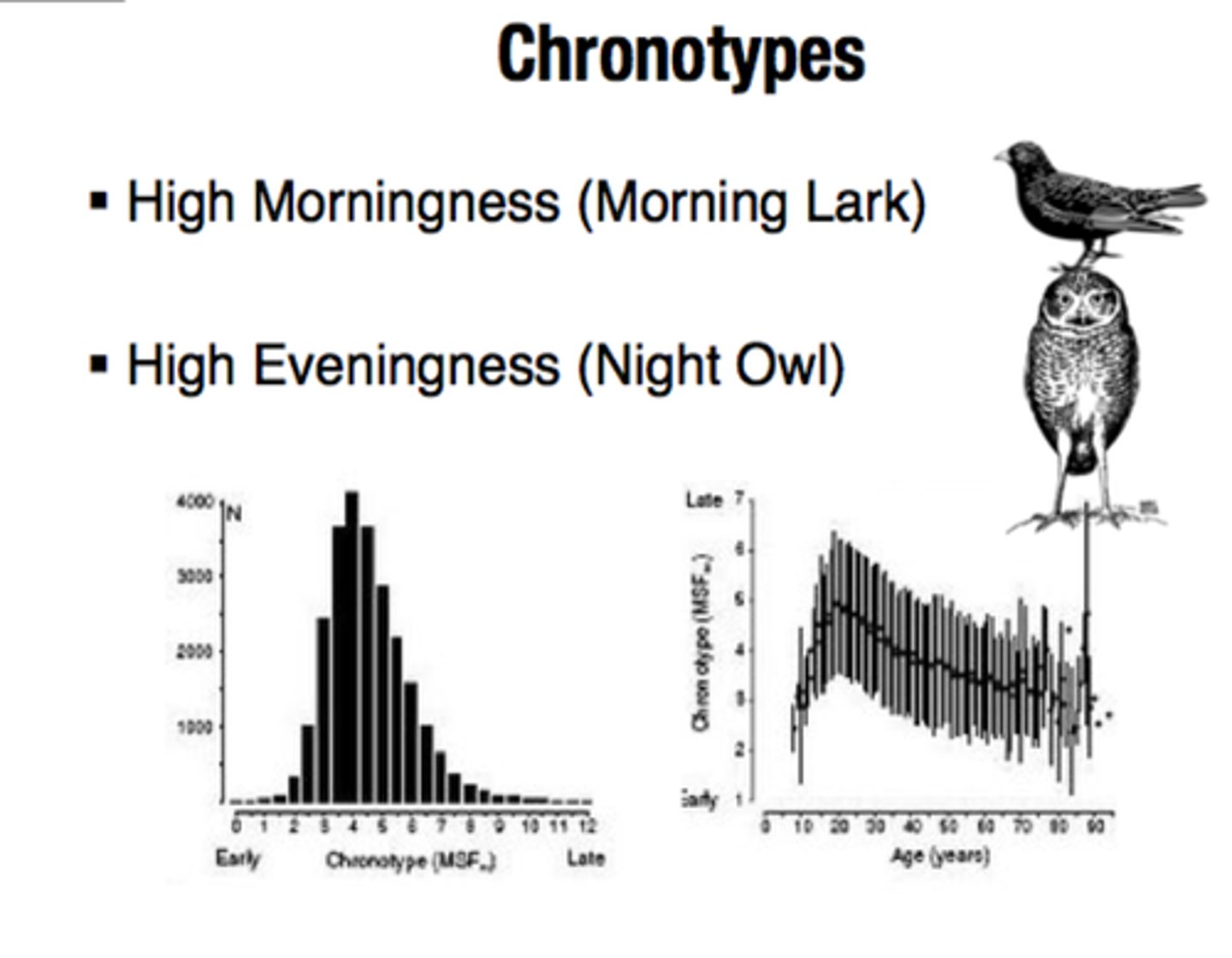
pineal gland function
secretes melatonin, regulates sleep-wake timing.
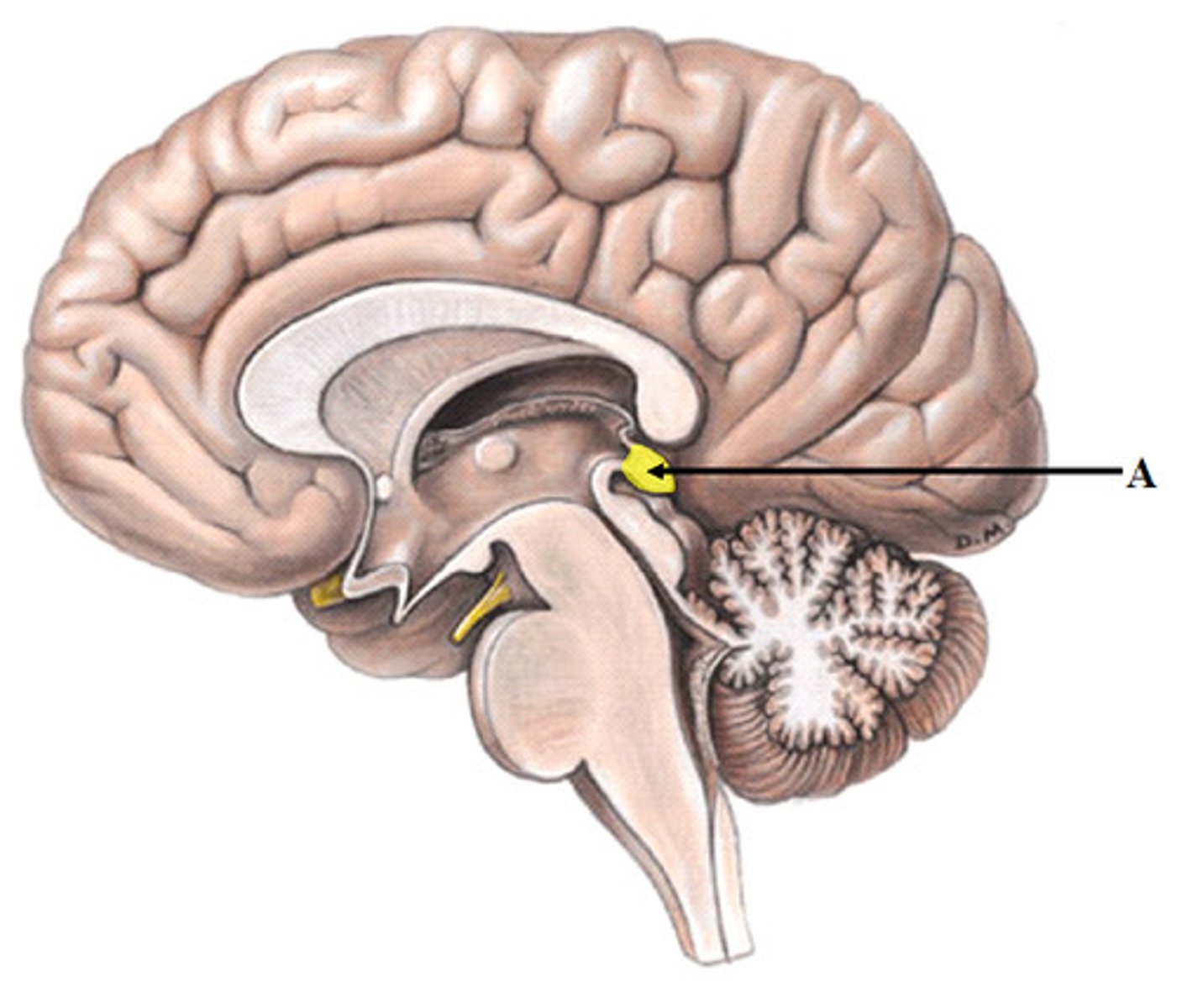
melatonin timing
elevated at night; inhibited by light.
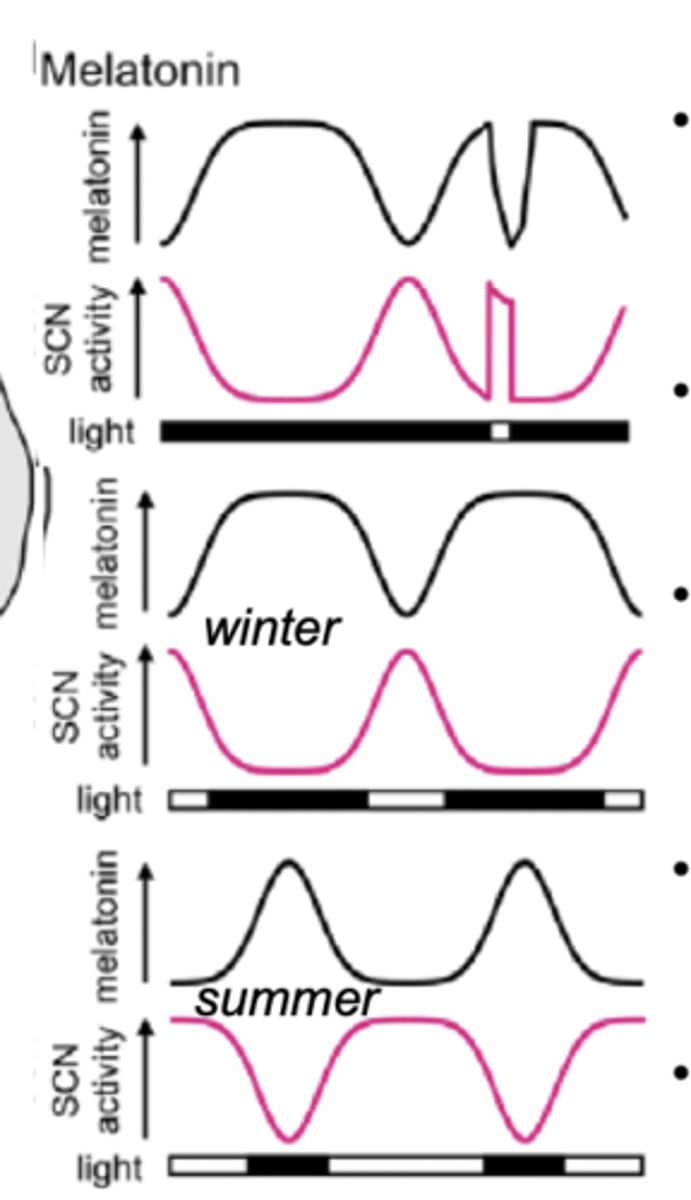
melatonin & aging
secretion decreases with age.
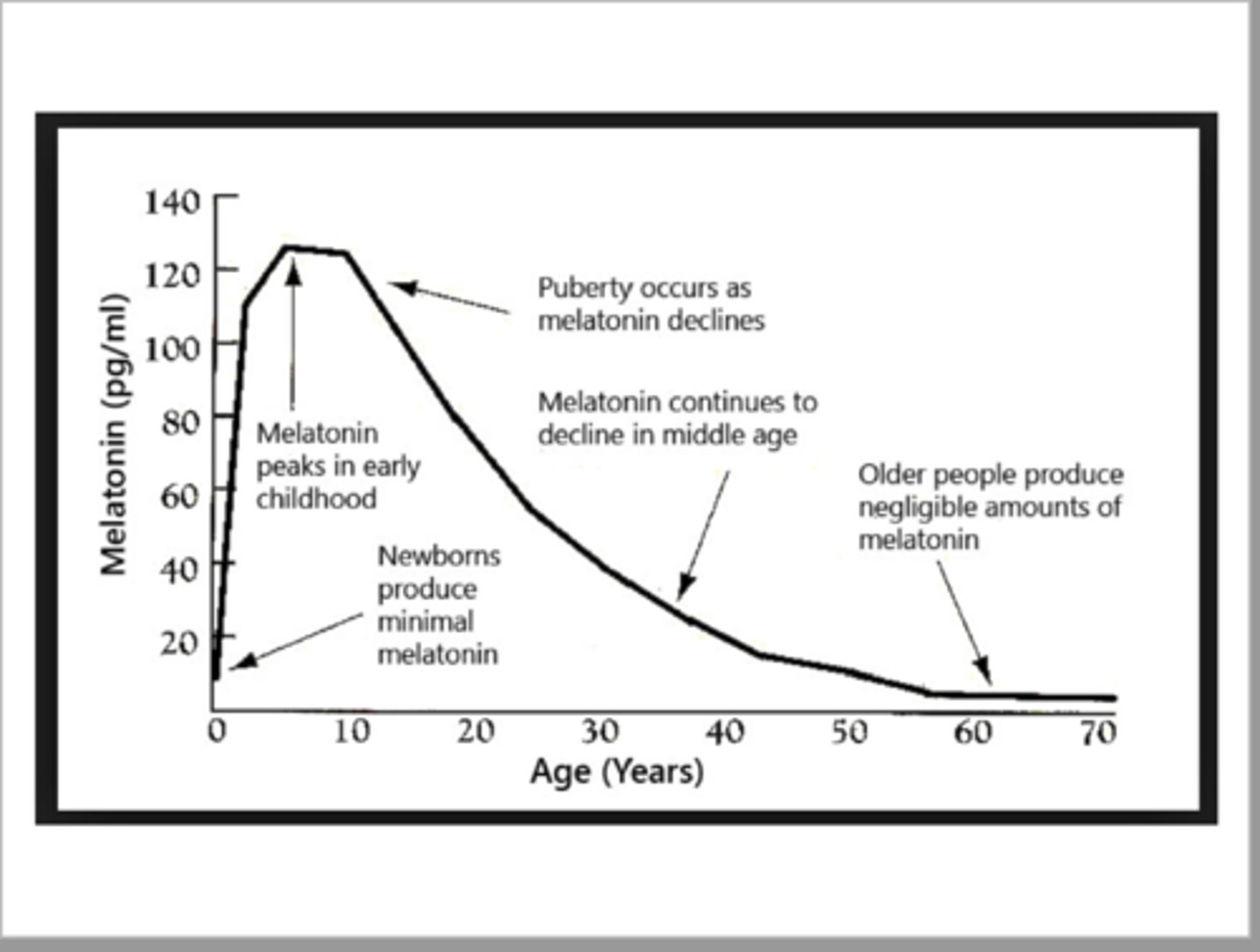
melatonin-regulated cycles
sleep-wake, reproductive cycles, seasonal rhythms.
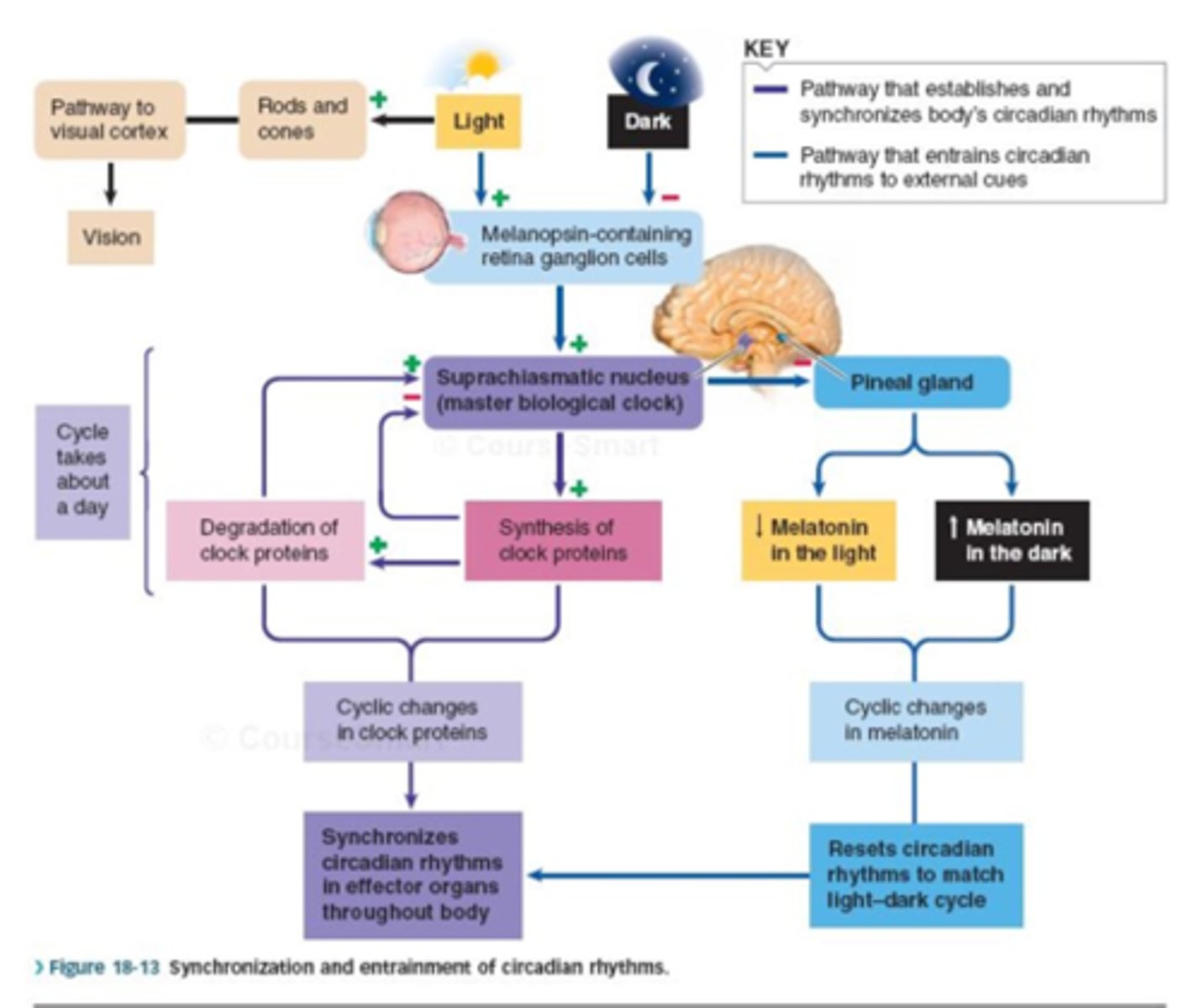
pgo waves
pontine-geniculate-occipital waves; occur before rem, linked to dreaming.
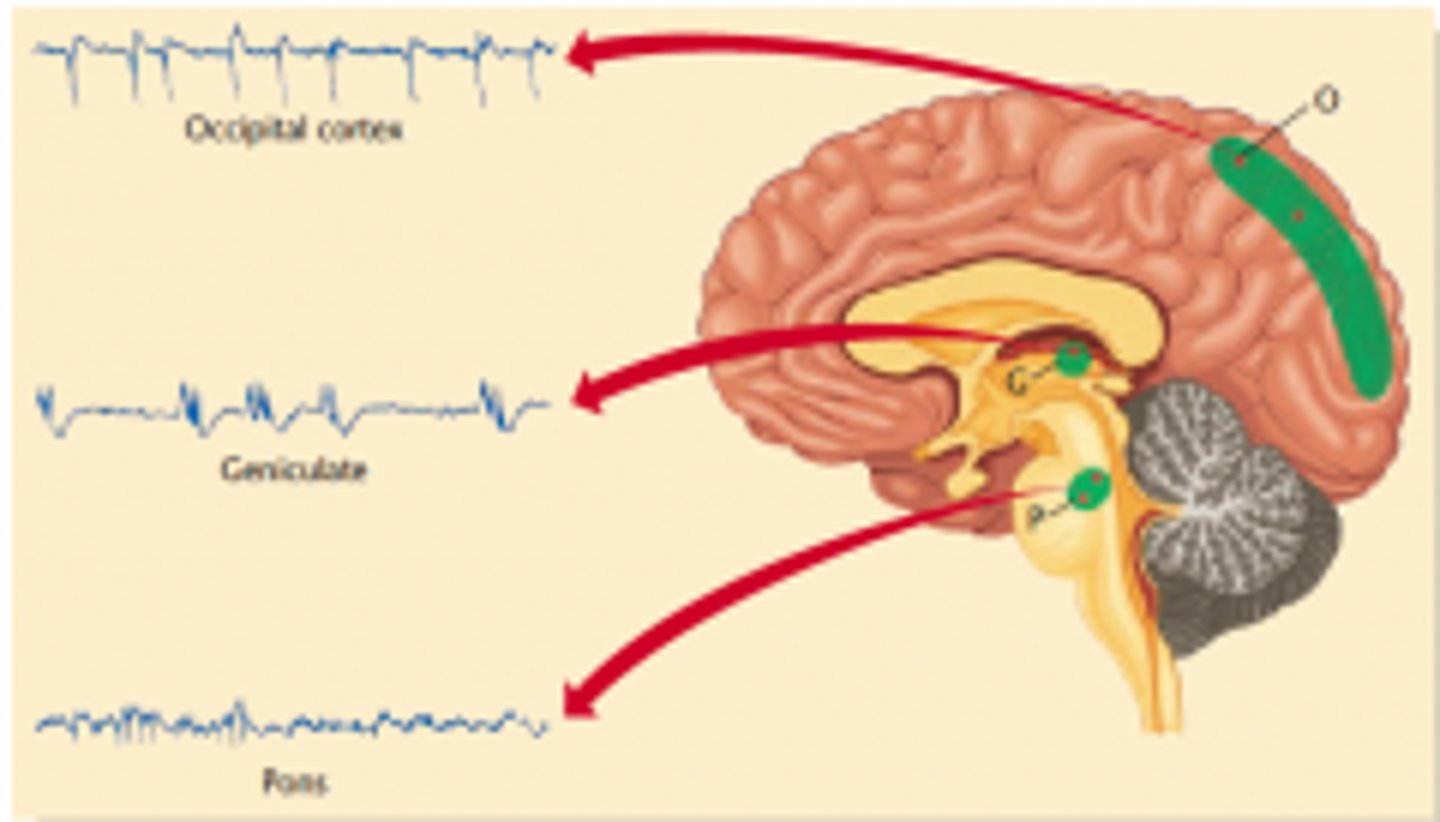
activation synthesis hypothesis
dreams result from brain interpreting random rem activity.
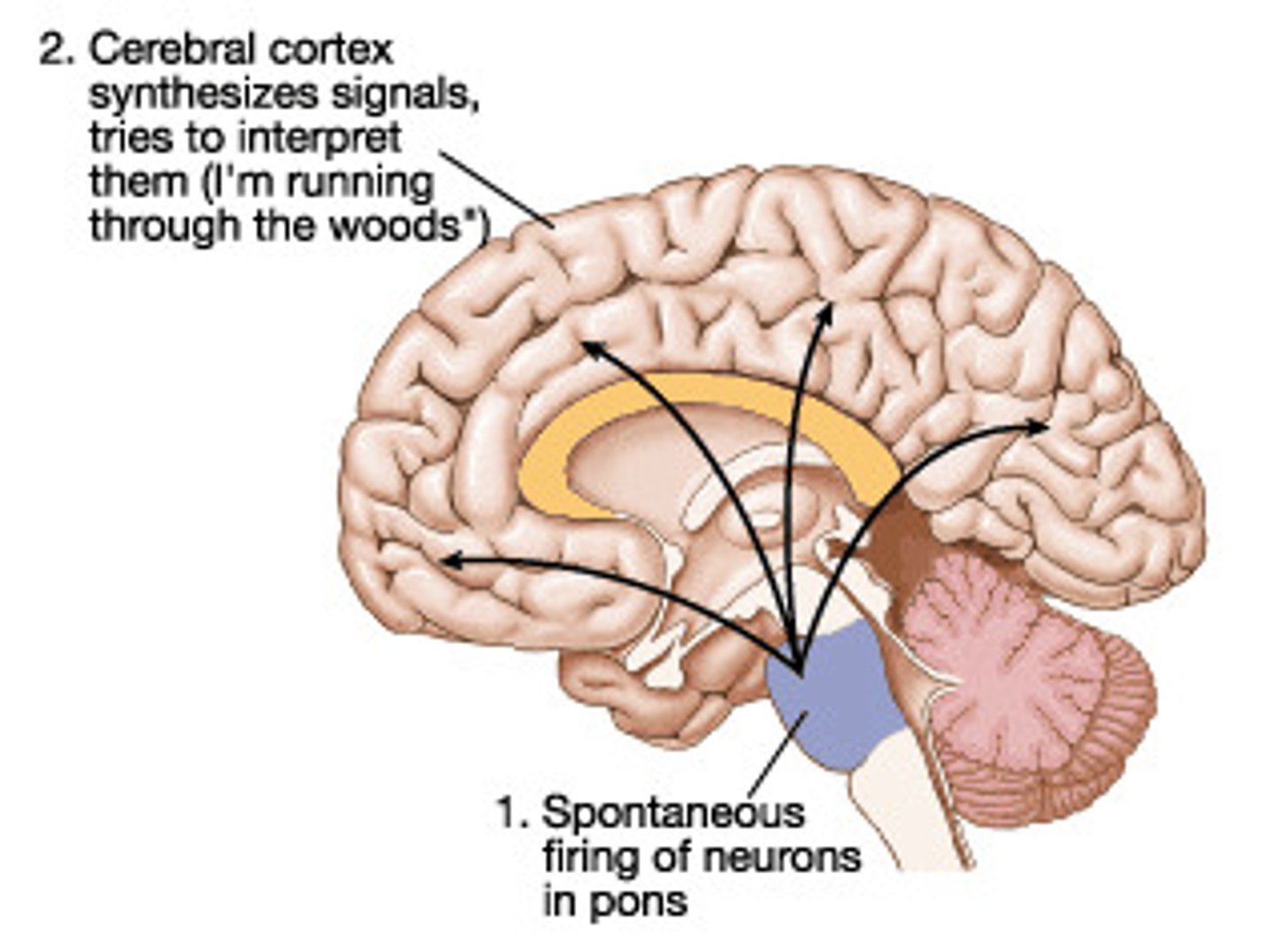
dorsolateral prefrontal cortex
inactive during rem; explains lack of logic in dreams.

thalamus in rem
relays dream imagery to cortex.
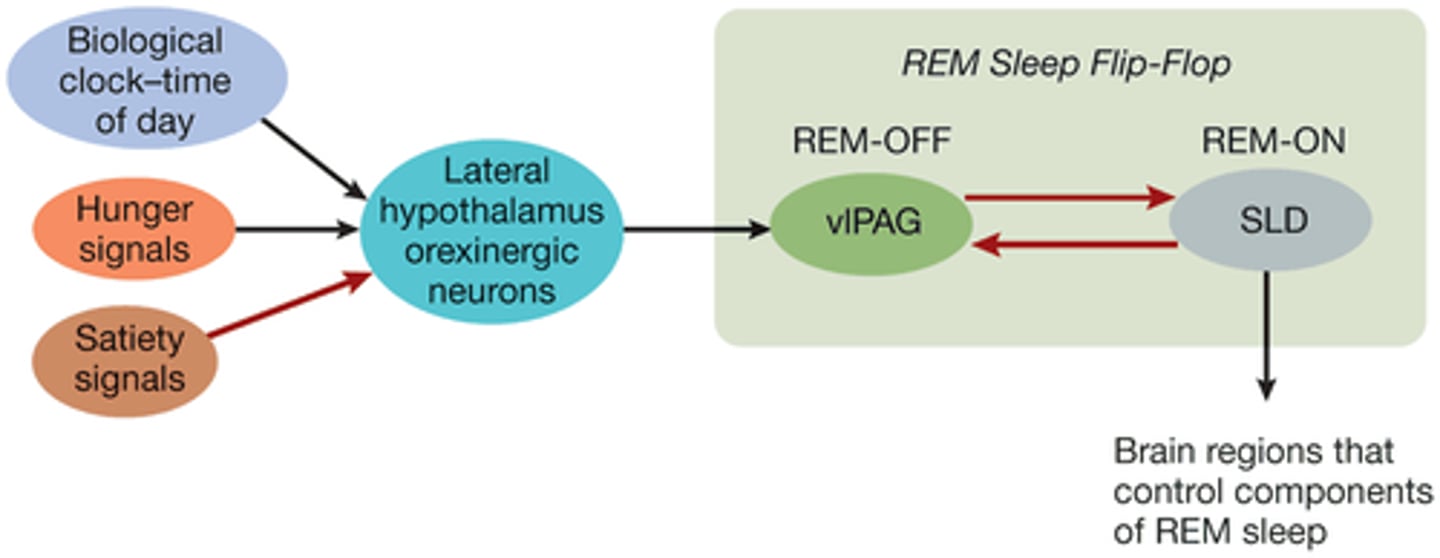
pons role
triggers rem and muscle atonia.
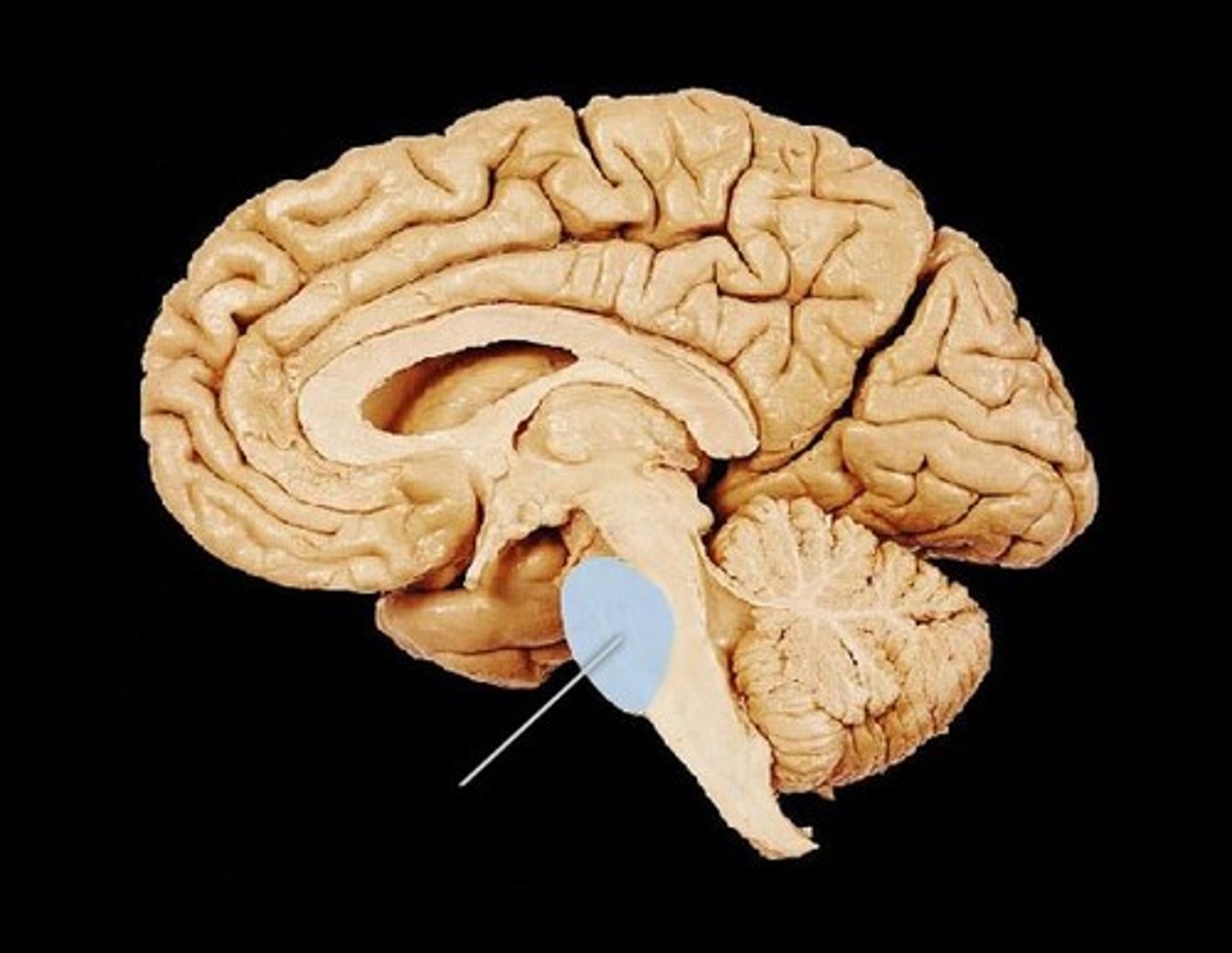
primary visual cortex in rem
not strongly active.
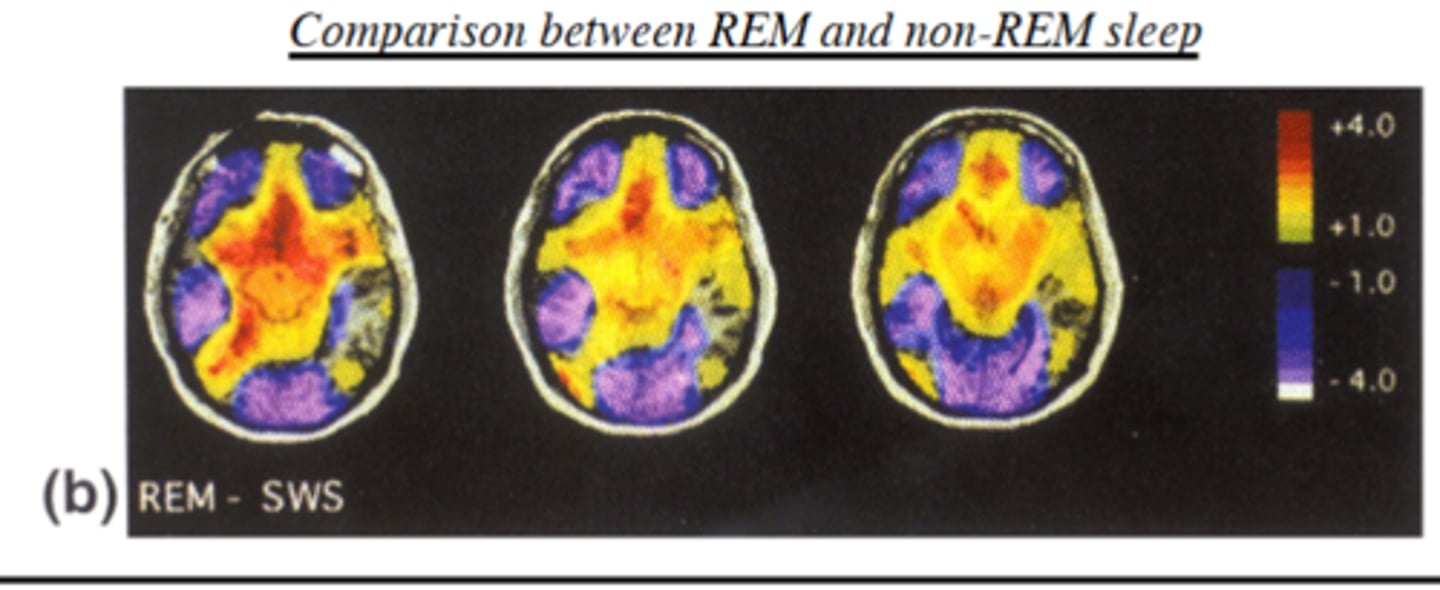
secondary visual cortex in rem
active; processes visual imagery of dreams.
amygdala in rem
highly active; processes emotional content of dreams.
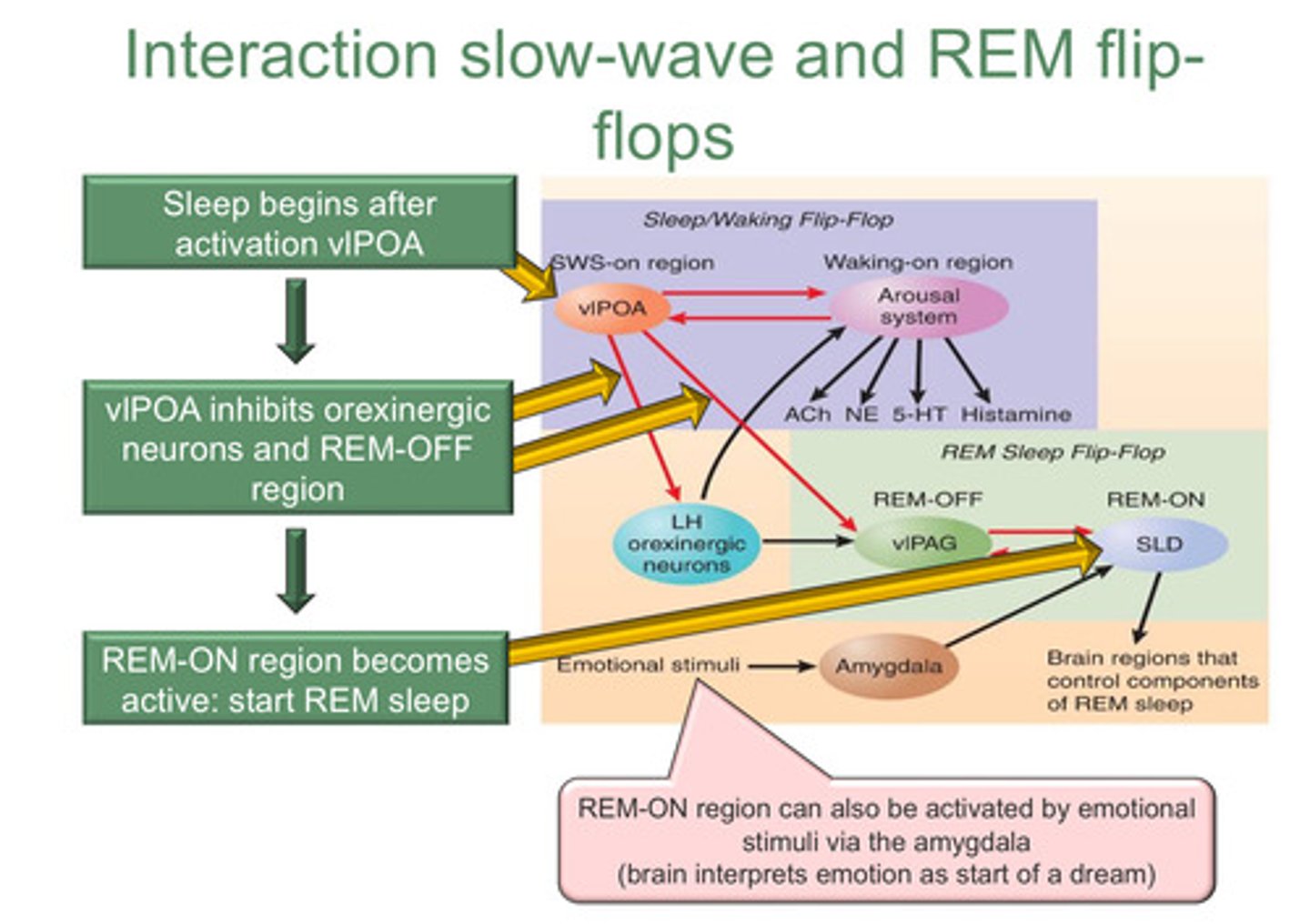
postural paralysis region
sublaterodorsal nucleus (sld) in pons.
two circadian rhythm sleep disorders
advanced sleep phase disorder and delayed sleep phase disorder.
onset vs. termination insomnia
onset: trouble falling asleep. termination: waking up too early.
maintenance insomnia
difficulty staying asleep or frequent awakenings.
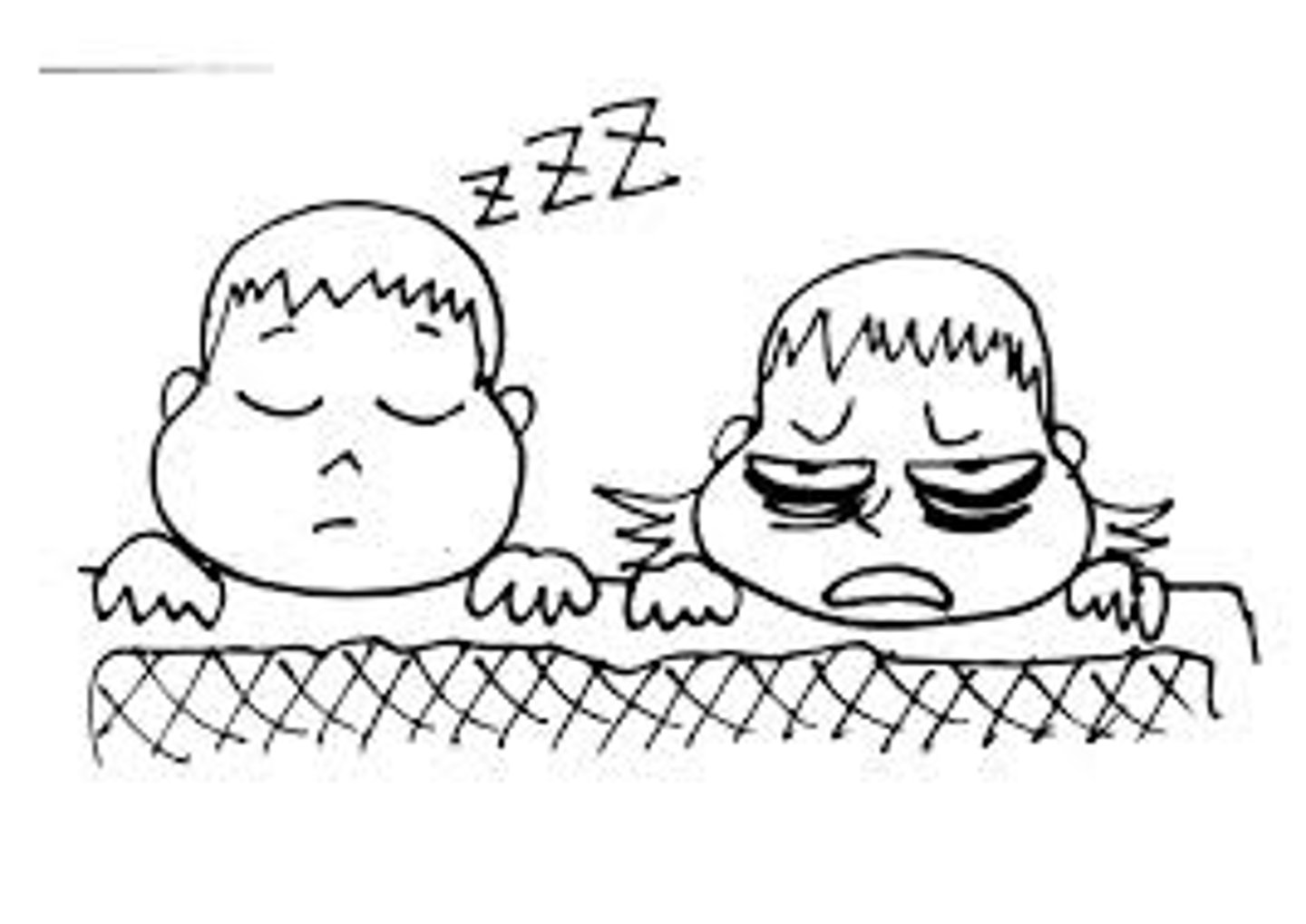
narcolepsy
sleep disorder with sleep attacks, often caused by orexin deficiency.

cataplexy
sudden muscle weakness while conscious, often triggered by emotion.
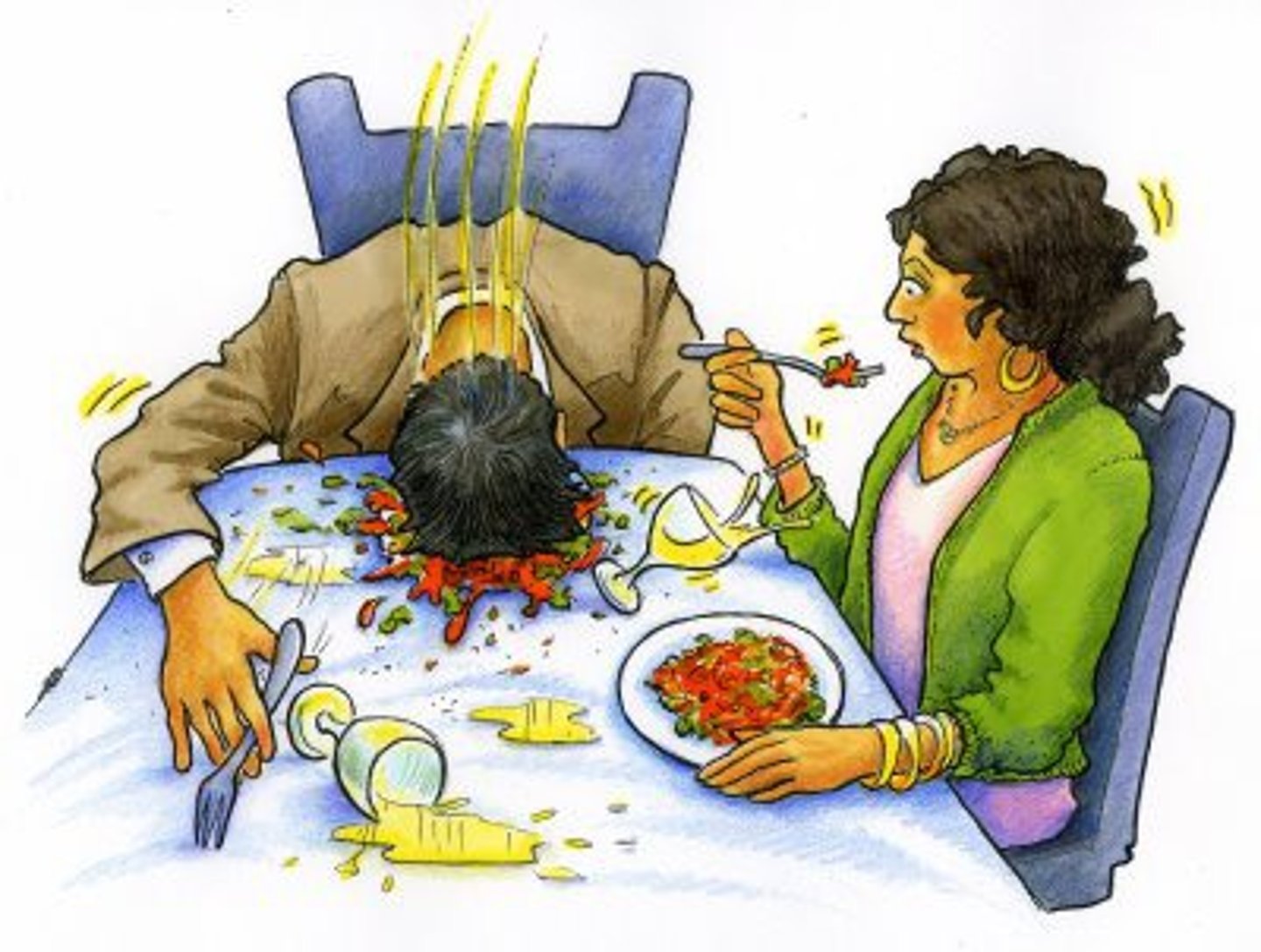
sleep apnea
breathing stops briefly during sleep, causes daytime drowsiness.
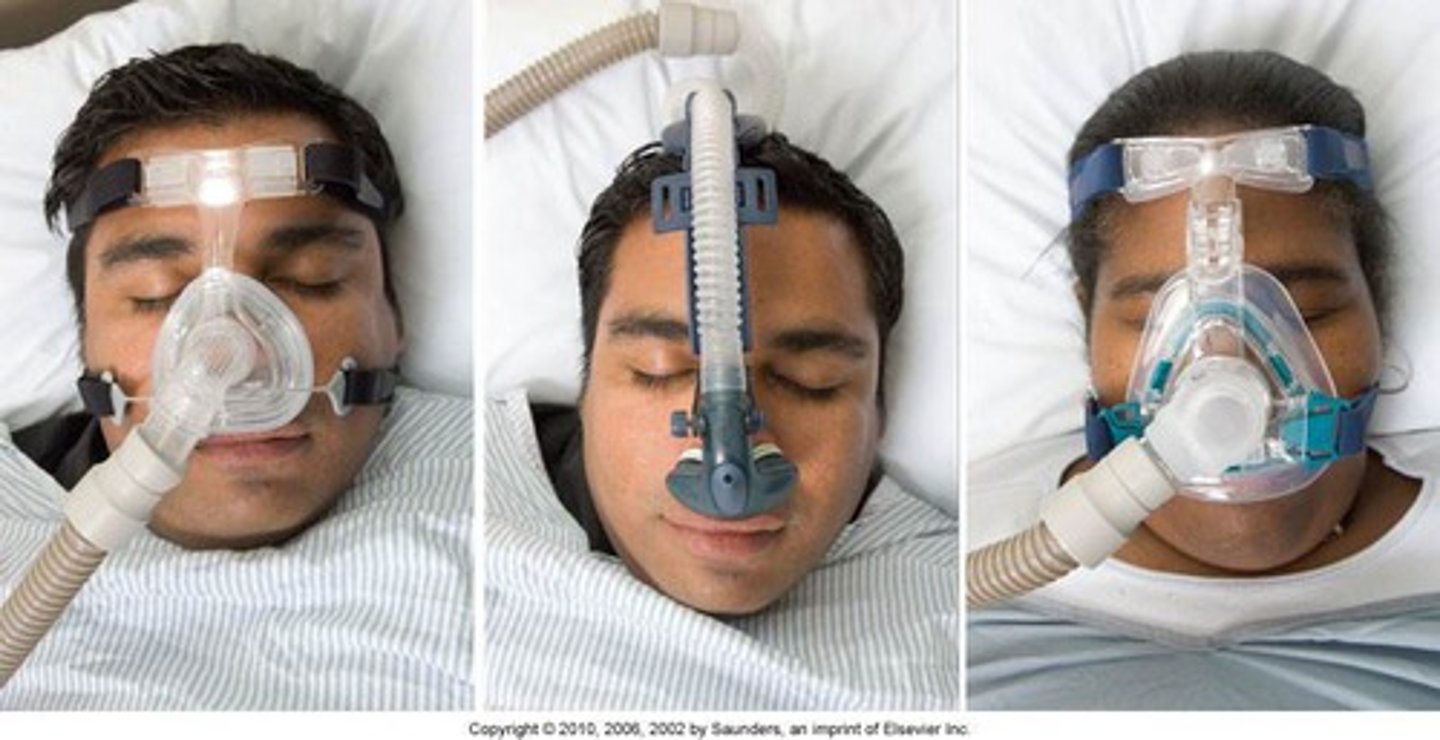
sleep paralysis & hypnagogic hallucinations
paralysis upon falling asleep or waking; vivid dream-like hallucinations.

rem behavior disorder
failure of rem atonia; person acts out dreams.
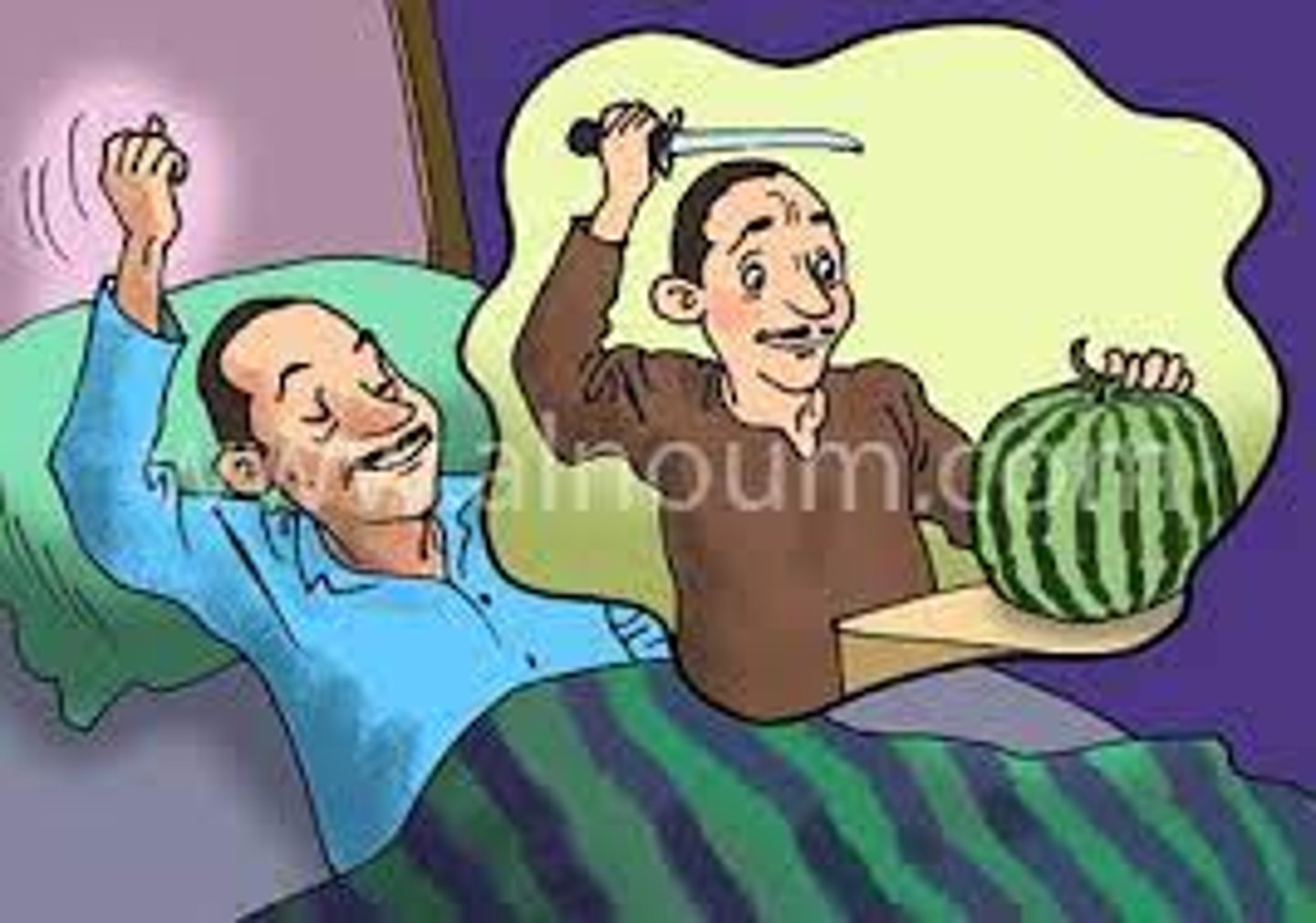
fatal familial insomnia
genetic disorder causing inability to sleep, leading to death.
